Bluebird Caravan (origins unknown)
Dec 11, 2020 15:18:27 GMT 10
bobandjacqui and hughdeany like this
Post by Don Ricardo on Dec 11, 2020 15:18:27 GMT 10
Hi all,
You can read an article about the history of the van and its restoration published on the CaravanCampingSales website on 3 October 2018 here. The article includes a photo of the van before its rescue:

(Source: CaravanCampingSales www.caravancampingsales.com.au/editorial/details/barnfind-vintage-van-hits-road-again-114889/] )
The caravan has a whole host of unusual and even unique features which are revealed in the photos. I will comment on the possible origins of the van below, after you have had a chance to see the van.
The photos below were taken by Wal Robinson and Kimbo, and in one case by Jarrod Wade, proprietor of the Caravan Repair Shop. Unless otherwise stated, the photos are Wal's. The observations about the van's features in maroon are from Wal. The remainder (in black) are mine.
_B.jpg)
Note the keel shaped roof, V-shaped front windows and the flat panel below the front windows (above and below).
_A.jpg)
Single pane awning windows at the front on the side and twin pane awning windows at the rear (above and below).
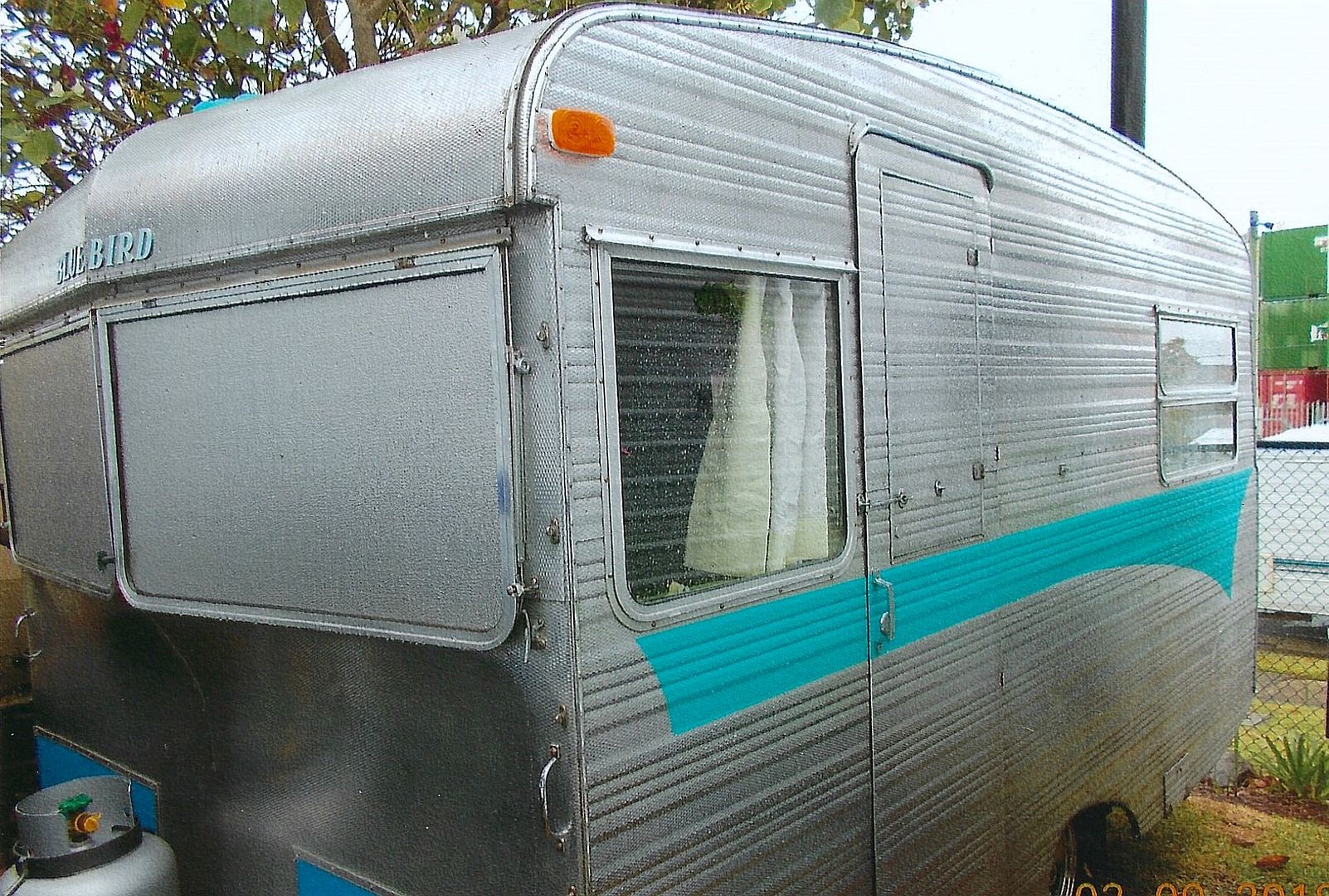
Wal: External air vent above warming cupboard above stove (below):
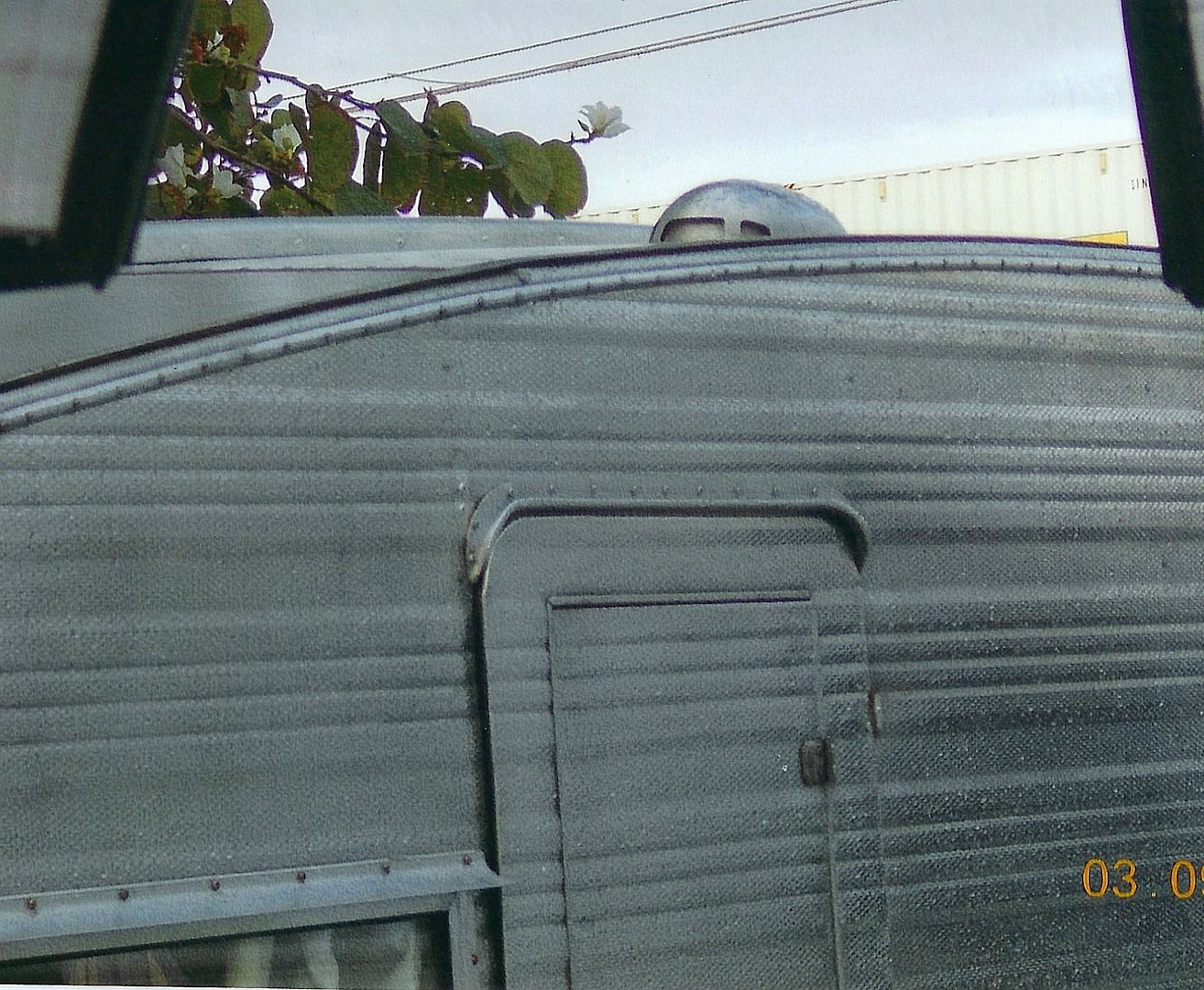


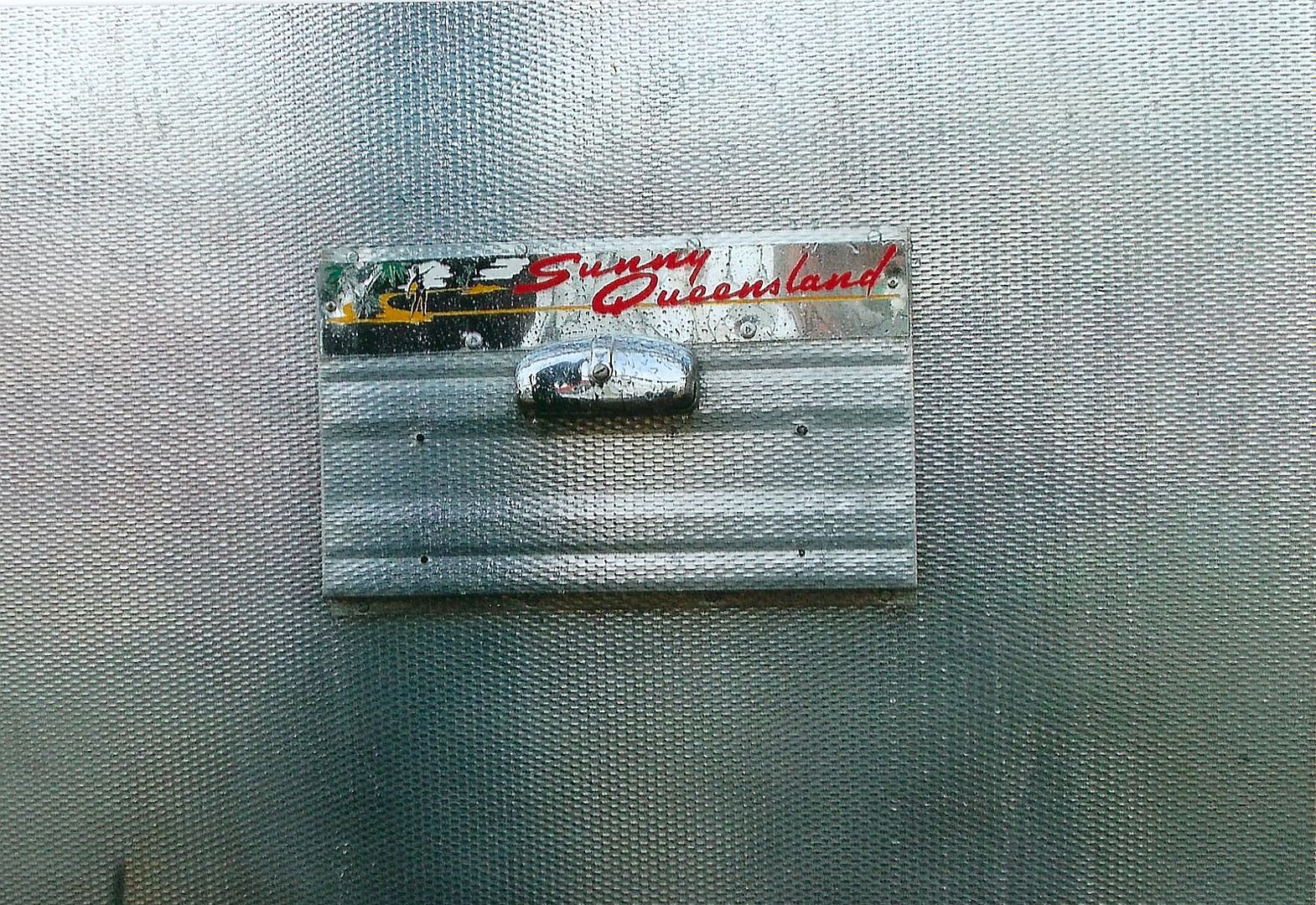
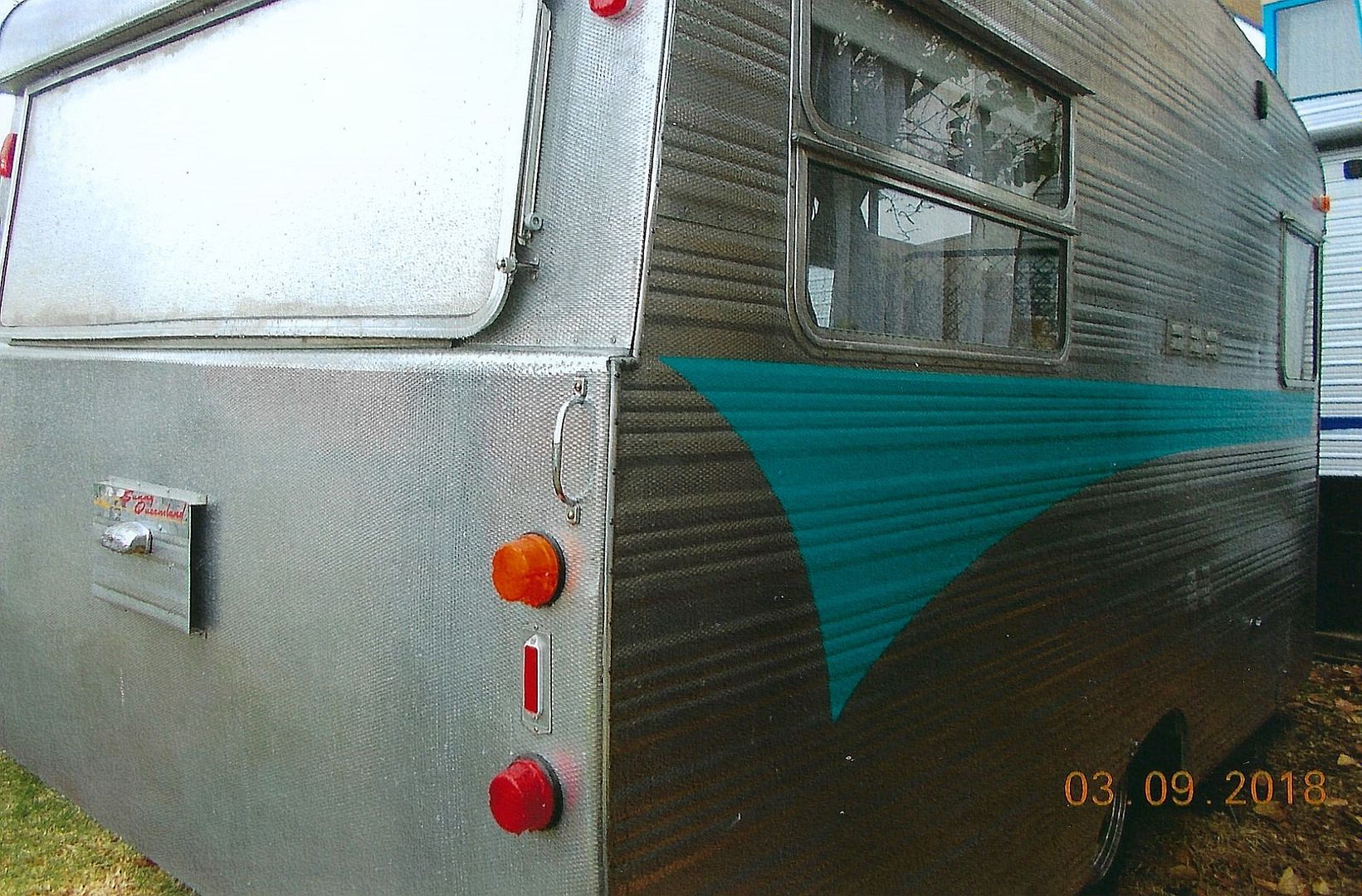
Side window:
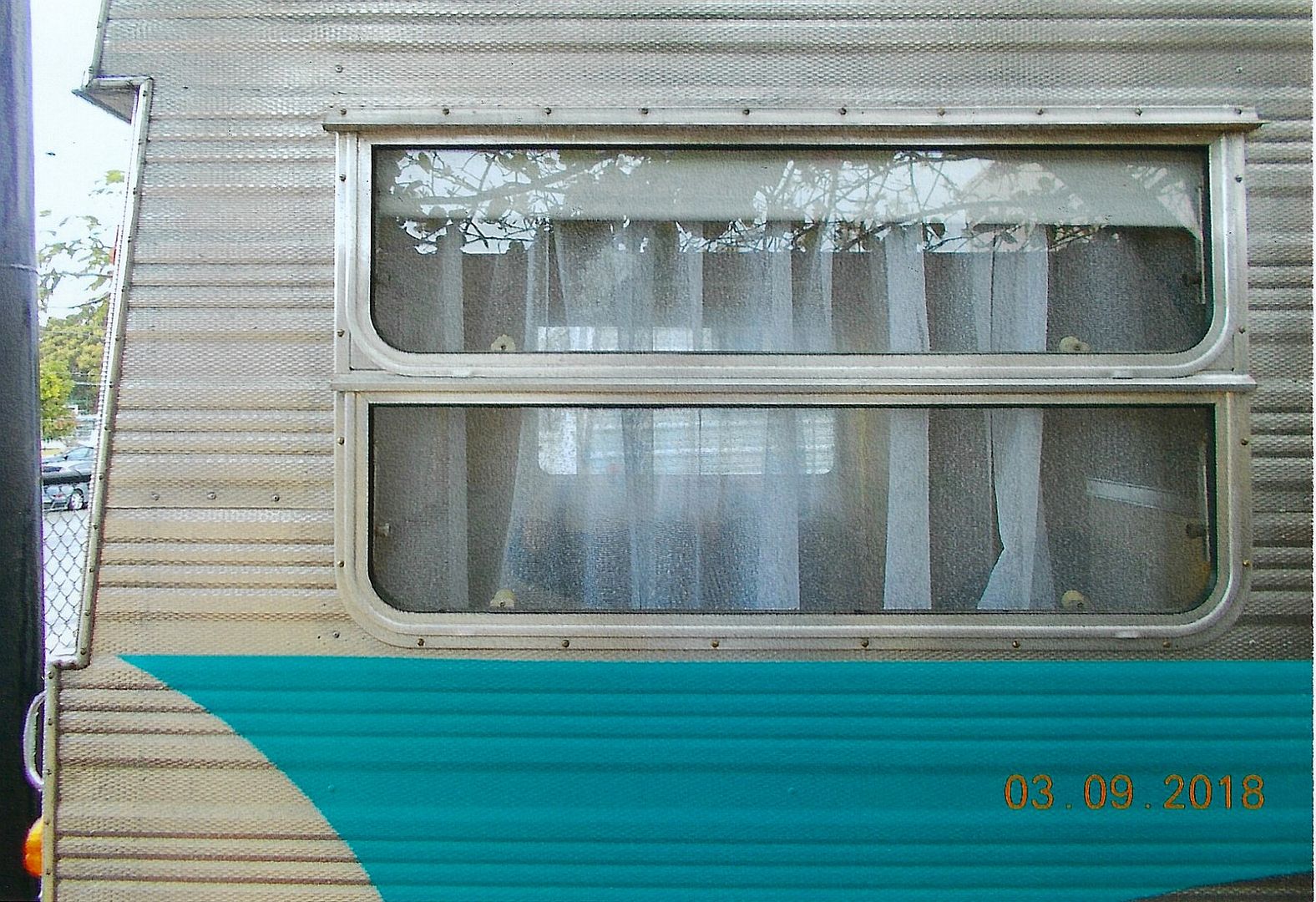

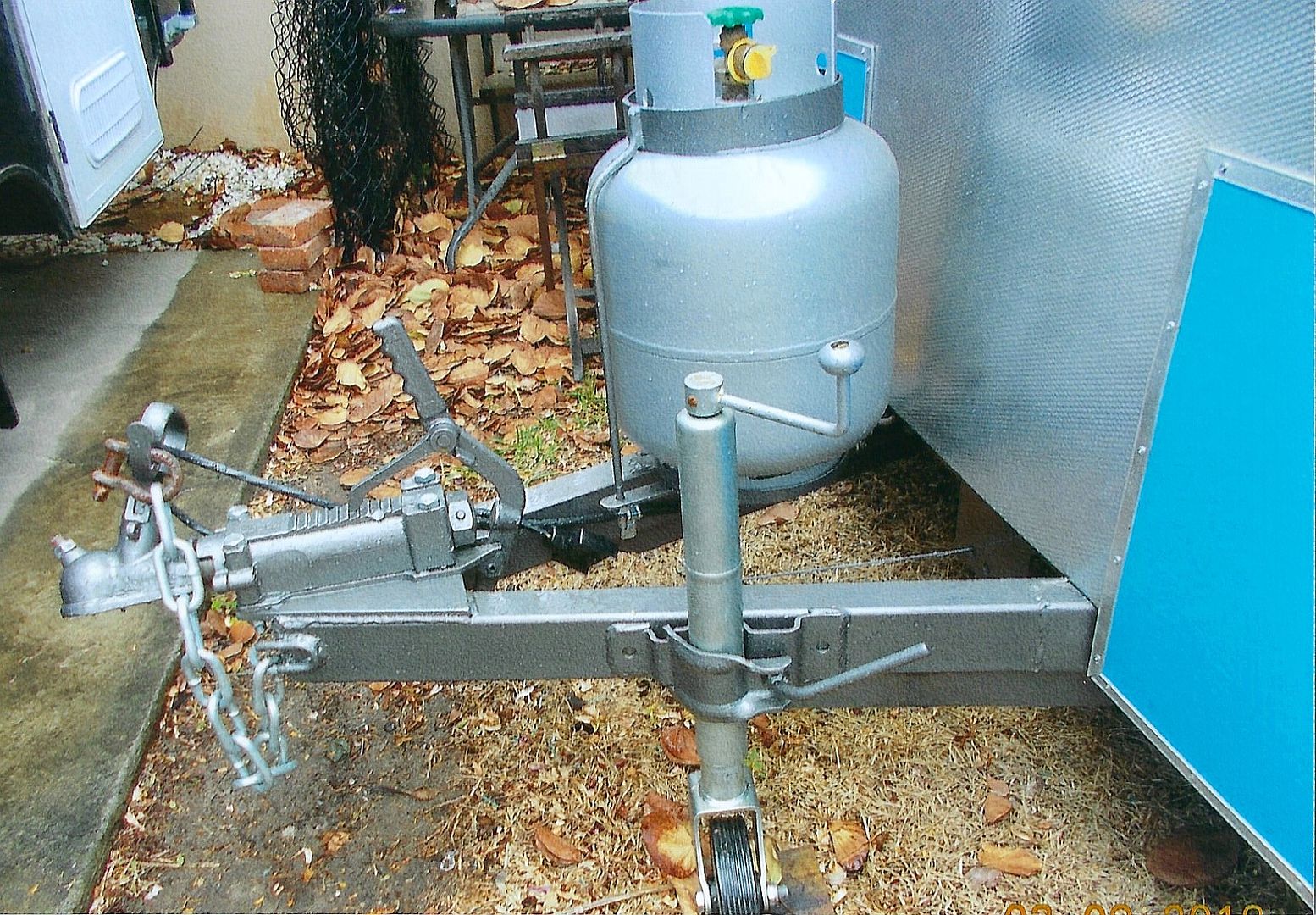
'Bluebird' brandname (or name assigned by a previous owner?):
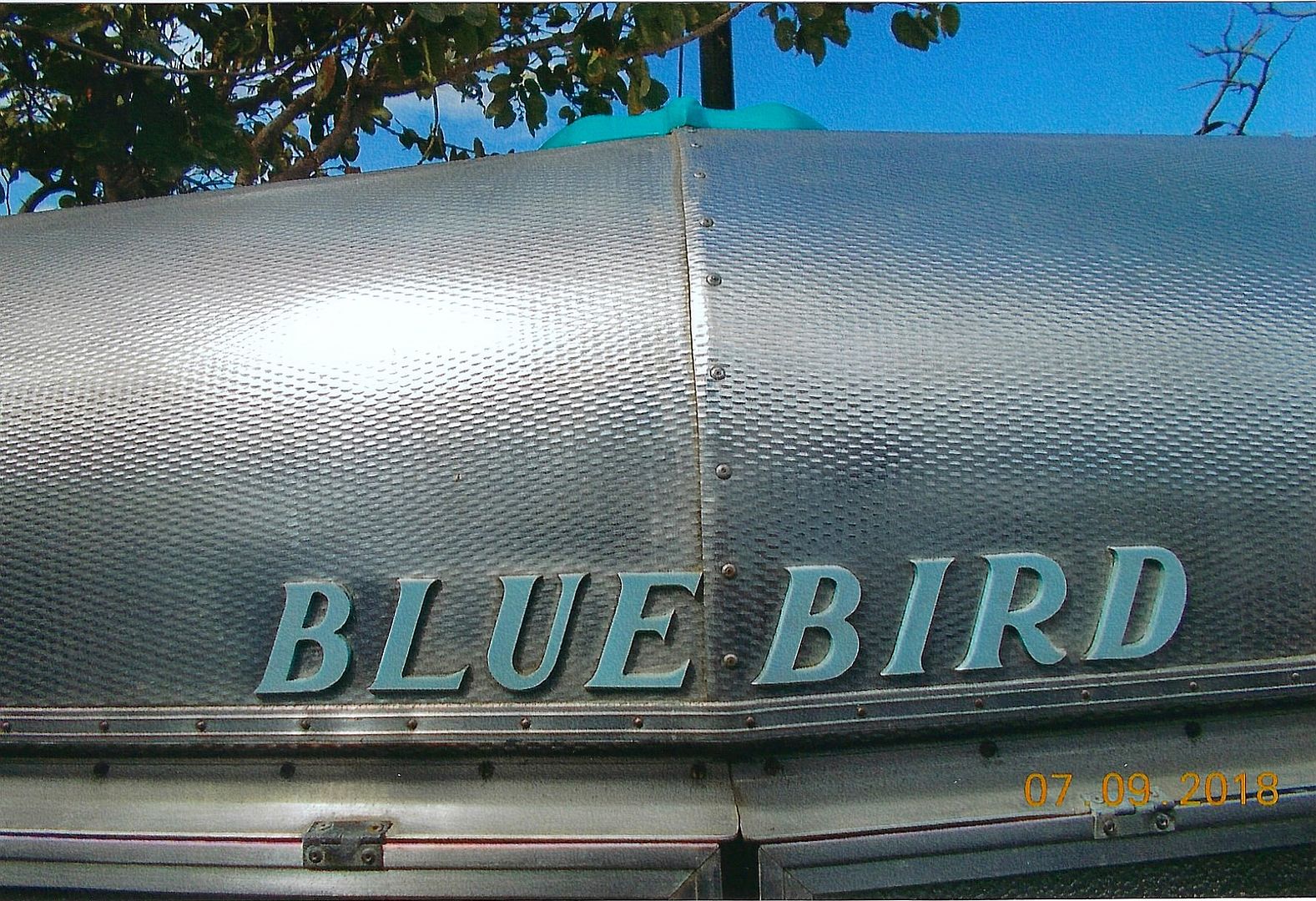
Bluebird roof ornament:

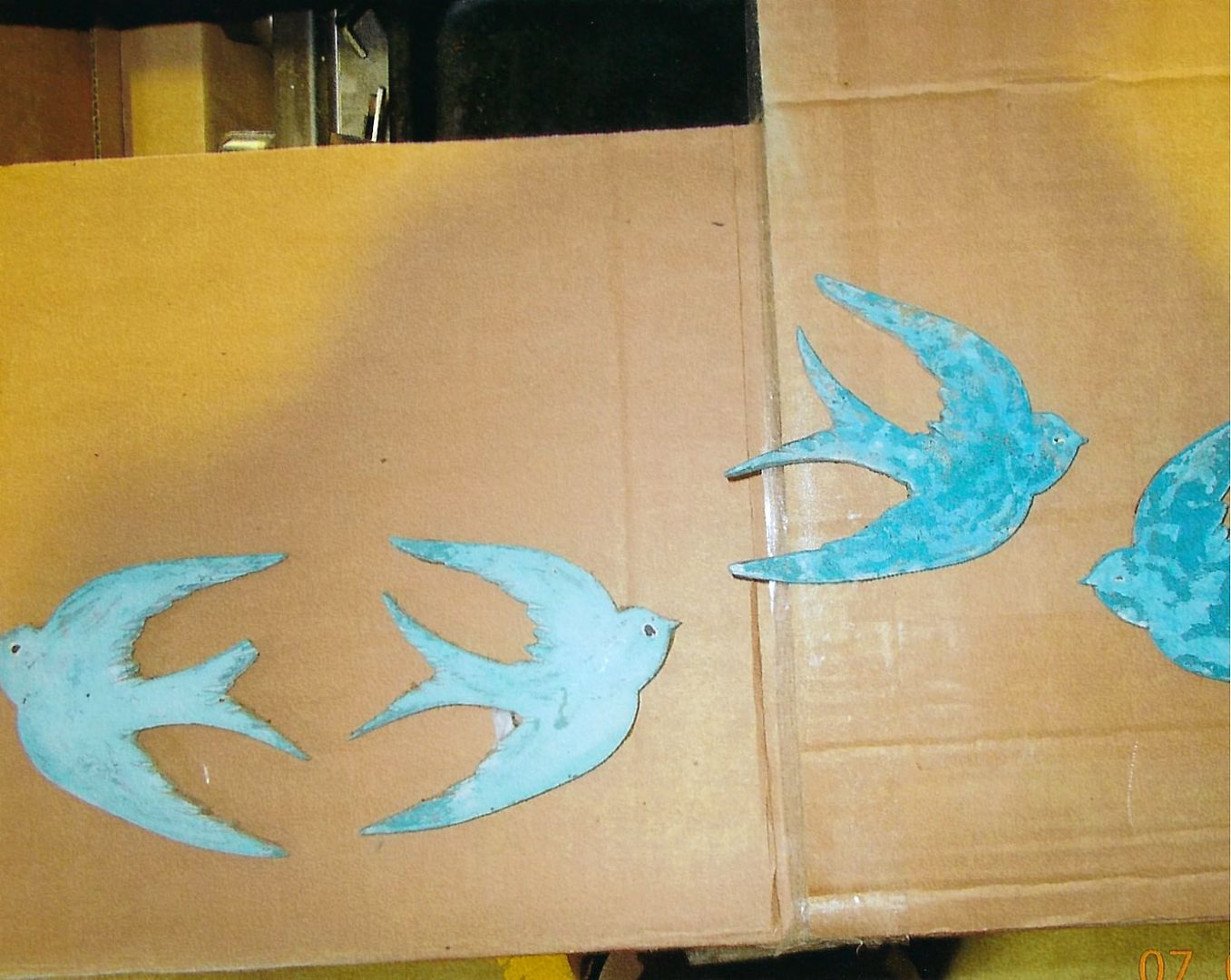
Rear stabilisers:

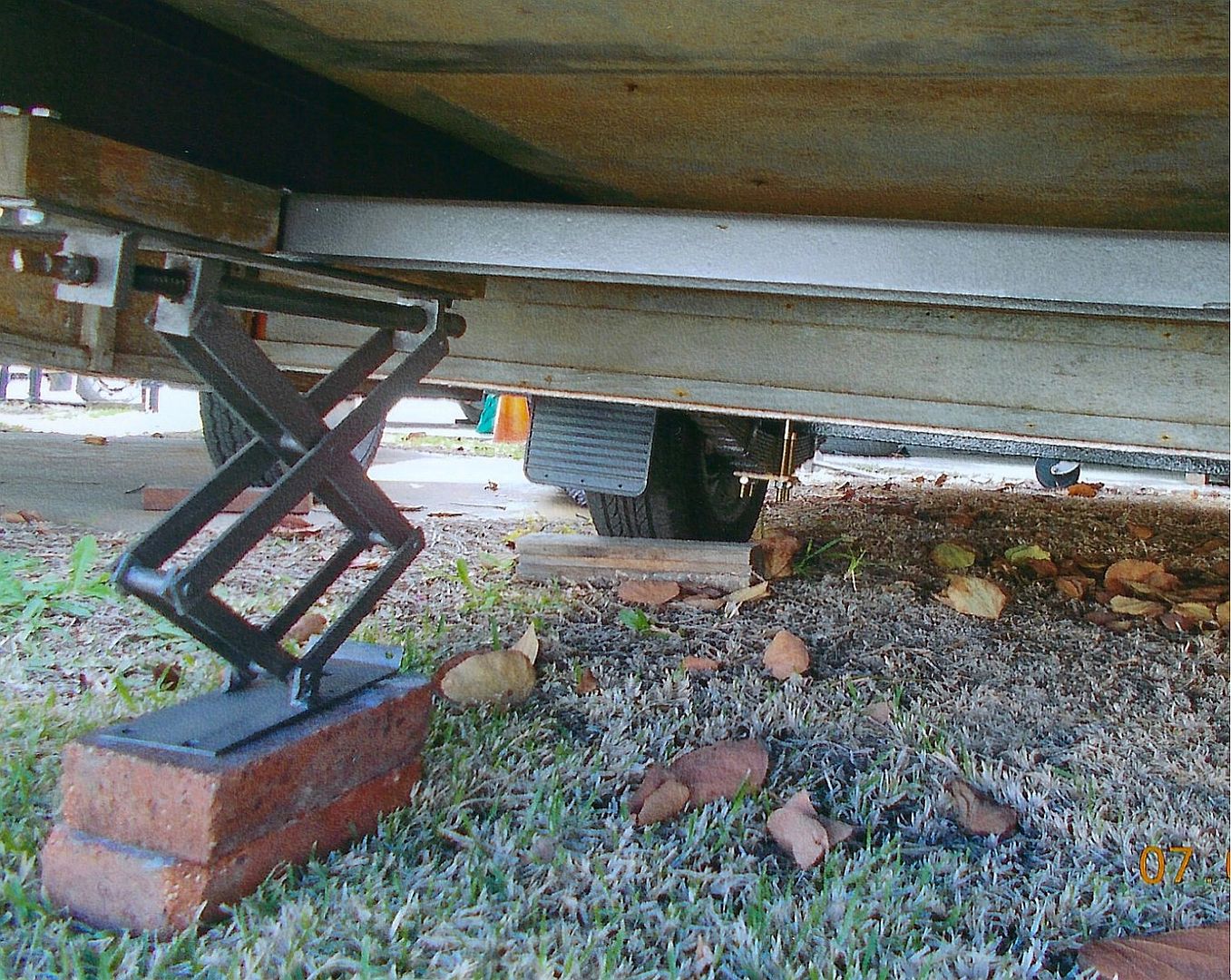
Front stabilisers:
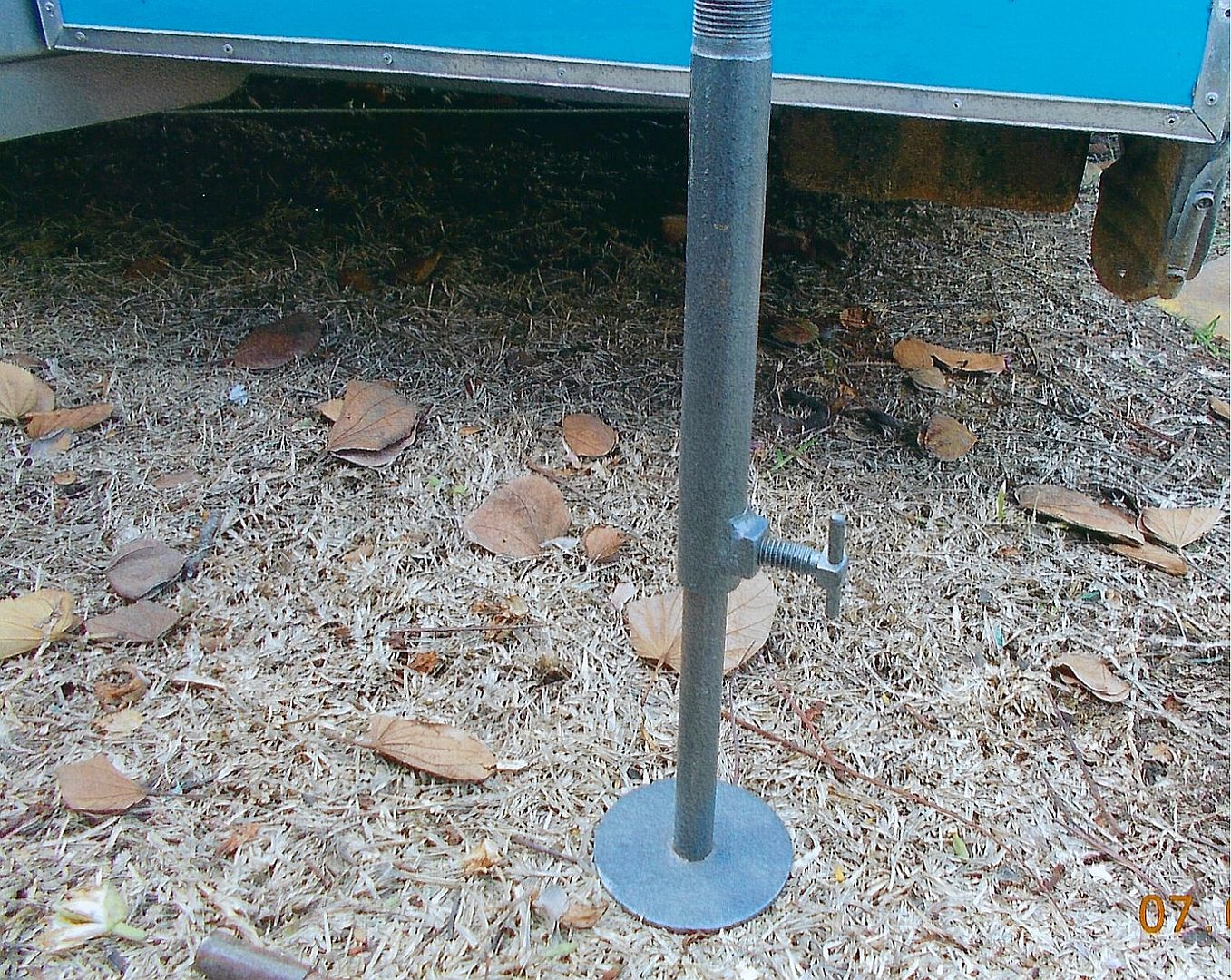
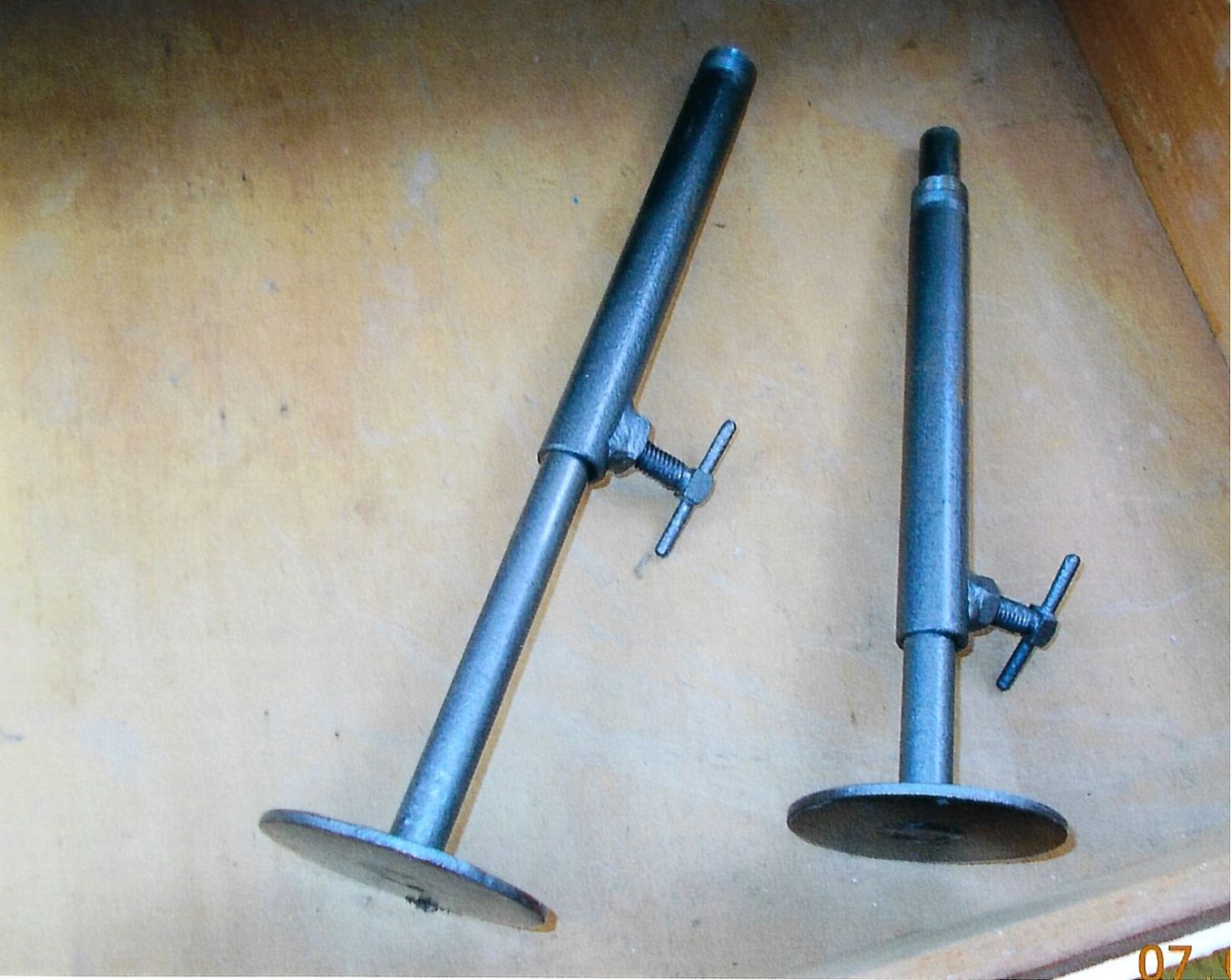
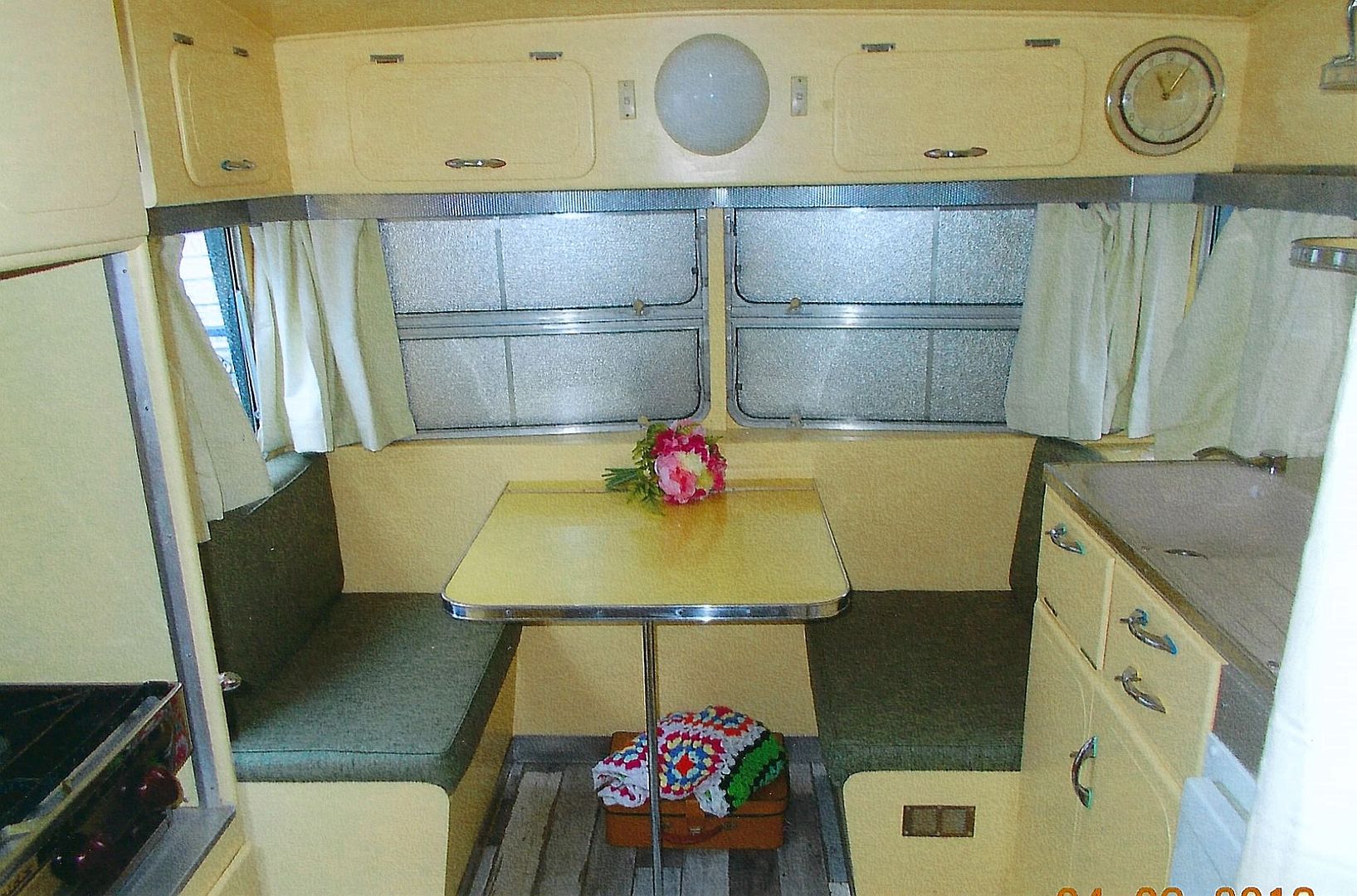
(Photo: Kimbo)
A. The caravan was built in New Zealand: This has been suggested by several people including Hughdeany because of the van's shape and windows. In addition, some Bluebird caravans were sold in New Zealand in the past. I have discussed this suggestion with Don and Marilyn Jessen, who were involved in caravan manufacture in NZ for many decades and have written a number of books about New Zealand caravans. Don Jessen responded as follows:
"…We used to have a Bluebird model in the 1950's but it was essentially an English Sprite. Auckland Caravan Co did the V fronts with a semi-keeled roof line on some of their models in the 50's and 60's and Dad did a flat fronted semi-keel type roof on the Liteweights from 1959 to 1977. Neither of us used the stipple aluminium, although it was used here in the sixties on other brands. The side paneled aluminium was certainly not available in New Zealand prior to 1998. The shape also does not represent any known 'brand' of caravan here either. So really I cannot shed any light at all on the mystery of the Bluebird.”
On the basis of Don Jessen’s comment I am discounting that the Bluebird van was built in New Zealand.
B. The caravan is an English import: Keel-roofed vans were not unusual in the UK, and the British manufacturer Bluebird produced some caravans in the 1950’s with keeled rooves, V-shaped front windows and a front panel profile not dissimilar to the Bluebird caravan above. Furthermore the British Bluebird’s bird logo - as shown on the brochure below - was not unlike the bluebird decorations on this Australian van:

As you’ll see from the link I provided above, the Caravan Repair Shop who restored the van, believed that the van may be a British Bluebird. However, the sticking point is that British caravan manufacturers changed over almost exclusively to fibreglass or plastic cladding in the 50’s and I cannot find any examples of British manufacturers building vans with unpainted aluminium cladding in the 50’s, 60’s or 70’s, let alone the multi-strand profile aluminium cladding on this Bluebird. I also cannot find any examples of a British Bluebird which are like this Bluebird. For these reasons I am discounting (for the moment) that the caravan has British origins.
C. The caravan has Australian origins: There were at least three Australian caravan manufacturers or dealers who operated under the Bluebird brand name – one in Belmore (Sydney) see here from the late 50's through to the mid-60's, one in Burwood (Melbourne) see here in the early 50's, and one in Elsternwick (Melbourne) see here in the mid 60's. The Elsternwick dealer in the mid 60’s sold caravans branded ‘Bluebird’, but our understanding is that they were sourced from Huntsman. The Belmore dealer may also have sold 'Bluebird' branded caravans. However, there is nothing at all about this Bluebird caravan which provides any link to any of the three firms as such.
Don Ricardo
ADDENDUM - October 2021: Some additional photos of the above Bluebird caravan taken at a vintage caravan event in Queensland in December 2018 which provide some different perspectives on the van (photographer unknown):

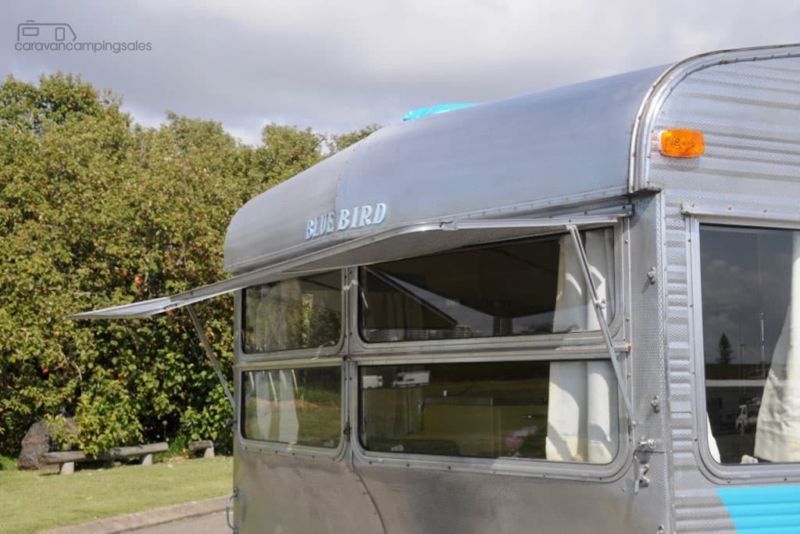

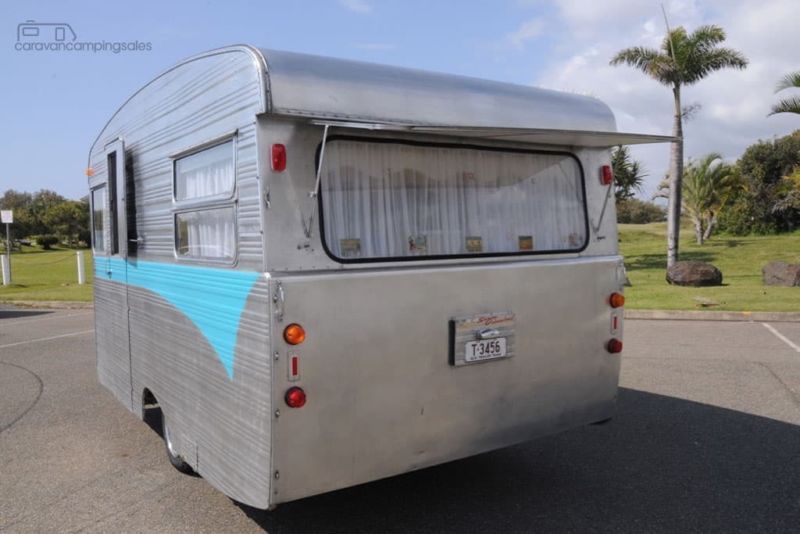
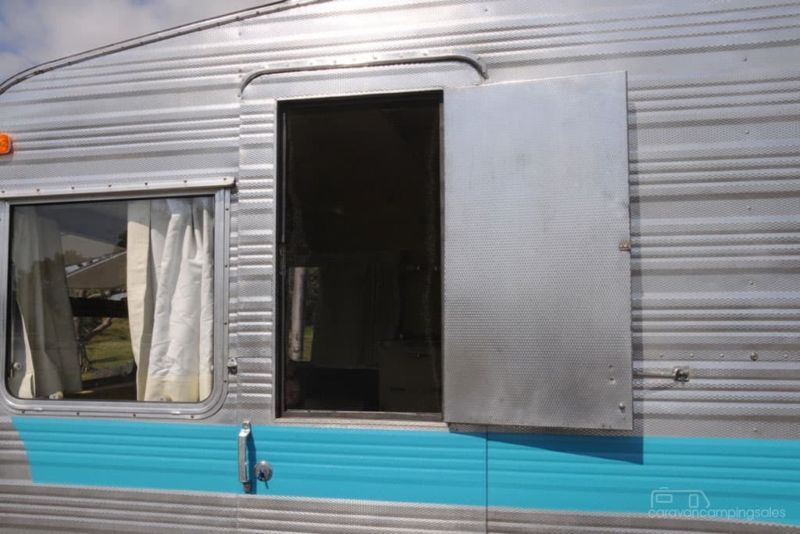


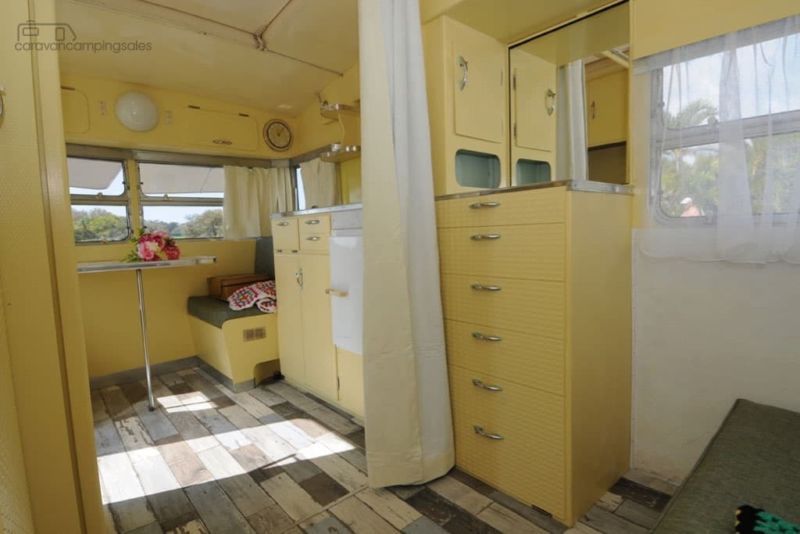

In September 2018 Wal Robinson, who is a friend of the forum but is not online, sent me some photos of a very unusual 'Bluebird' 12 ft caravan that he had seen at the Caravan Repair Shop in Arundel, Queensland. As it happens the same caravan was photographed by Kimbo at the Leyburn Sprints Caravan Display a month earlier. I have spent quite some time intermittently over the intervening period trying to pin down the caravan's origins, but to no avail.
You can read an article about the history of the van and its restoration published on the CaravanCampingSales website on 3 October 2018 here. The article includes a photo of the van before its rescue:

(Source: CaravanCampingSales www.caravancampingsales.com.au/editorial/details/barnfind-vintage-van-hits-road-again-114889/] )
The caravan has a whole host of unusual and even unique features which are revealed in the photos. I will comment on the possible origins of the van below, after you have had a chance to see the van.
The photos below were taken by Wal Robinson and Kimbo, and in one case by Jarrod Wade, proprietor of the Caravan Repair Shop. Unless otherwise stated, the photos are Wal's. The observations about the van's features in maroon are from Wal. The remainder (in black) are mine.
EXTERNAL
_B.jpg)
(Photo: Kimbo)
Note the keel shaped roof, V-shaped front windows and the flat panel below the front windows (above and below).
_A.jpg)
(Photo: Kimbo)
Single pane awning windows at the front on the side and twin pane awning windows at the rear (above and below).
Wal: All three stoneguards (front and rear) have been re-panelled with new similar but non-matching alloy. (The original window stoneguards are shown in the photo of the van before rescue above.)

Wal: Front stone panels and side flashes are all in original colours respectively:
Wal: External air vent above warming cupboard above stove (below):





Side window:

Tear shaped wheel arch:
Wal: Van had no rims when purchased. Axle stubs are Datsun 1200. Rims almost impossible to find with that particular stud pattern. They finally located only two, but in alloy. Take what you can get I suppose! No evidence of any previous wheel arch spats.

Wal: The Caravan Repair Shop made a new drawbar as old one was rusted, hence weld join and reinforcing. No serial number available. (However, Wal was told that the original drawbar did have a serial number on it):

'Bluebird' brandname (or name assigned by a previous owner?):

Bluebird roof ornament:
Wal: Very low profile hatch.

Wal: These fabulous (plastic? fibreglass? plaster?) Bluebirds adorned the stoneguards - two on rear and one on each front shield:

Rear stabilisers:


Front stabilisers:


Wal: Blue annexe poles, naturally. Hexagonal. No annexe or awning present.
INTERNAL

Wal: They said the clock works.
Wal: Pull right hand dinette backrest cushion forward and lo and behold, an alloy storage area, ventilated, for pantry-type items:
Wal: Note front hatch winder handle (above window pelmet). Also note gas powered light:
(Photo: Jarrod Wade)
Wal: These photos show the saucepan/frypan racks above the sink works area:
Wal: Sink pump foot pedal on floor to left of cupboards:
Wal: This shows the original floor lino pattern (below). The flooring was unsaveable. Note cut-out round holders on bottom shelf. The hose connector needs to be connected to sink fitting.
Looking towards rear:
Dressing table, cabinet and drawers:
(Photo: Kimbo)
(Photo: Kimbo)
Dressing table cabinet open:
Rear hatch winder handle to right of cupboard:
Rear divan/double bed:
Wardrobe and mirror:
Stove alcove and crockery rack/draw below it:
(Photo: Kimbo)
Another view of the crockery rack/drawer with other fitted drawers on the right:
View of open hatch and room divider. Note fly wire between hatch and roof. Also the warming cupboard above the stove alcove:
(Photo: Kimbo)
Front hatch winder handle and view of hatch raising mechanism:
(Photo: Kimbo)
(Photo: Kimbo)
As shown above, the Bluebird caravan incorporates a number of unusual features, including the keeled roof and V-shaped front windows, the combination of single pane and double pane side windows, the hatch raising mechanism involving a winding mechanism, the galley split between the offside (sink and fridge) and nearside (stove alcove, warming cupboard and fitted plate and glass racks, etc), the ventilated food storage compartment behind one of the dinette seat cushions, and the well fitted out dressing table.
What can we tell about its origins? The multi-strand aluminium cladding on the sides was introduced for general use in Australia around 1964, so that suggests that this Bluebird van was built no earlier than 1964. And what about who built it? That is a puzzling question. Several theories have been suggested:
A. The caravan was built in New Zealand: This has been suggested by several people including Hughdeany because of the van's shape and windows. In addition, some Bluebird caravans were sold in New Zealand in the past. I have discussed this suggestion with Don and Marilyn Jessen, who were involved in caravan manufacture in NZ for many decades and have written a number of books about New Zealand caravans. Don Jessen responded as follows:
"…We used to have a Bluebird model in the 1950's but it was essentially an English Sprite. Auckland Caravan Co did the V fronts with a semi-keeled roof line on some of their models in the 50's and 60's and Dad did a flat fronted semi-keel type roof on the Liteweights from 1959 to 1977. Neither of us used the stipple aluminium, although it was used here in the sixties on other brands. The side paneled aluminium was certainly not available in New Zealand prior to 1998. The shape also does not represent any known 'brand' of caravan here either. So really I cannot shed any light at all on the mystery of the Bluebird.”
On the basis of Don Jessen’s comment I am discounting that the Bluebird van was built in New Zealand.
B. The caravan is an English import: Keel-roofed vans were not unusual in the UK, and the British manufacturer Bluebird produced some caravans in the 1950’s with keeled rooves, V-shaped front windows and a front panel profile not dissimilar to the Bluebird caravan above. Furthermore the British Bluebird’s bird logo - as shown on the brochure below - was not unlike the bluebird decorations on this Australian van:

As you’ll see from the link I provided above, the Caravan Repair Shop who restored the van, believed that the van may be a British Bluebird. However, the sticking point is that British caravan manufacturers changed over almost exclusively to fibreglass or plastic cladding in the 50’s and I cannot find any examples of British manufacturers building vans with unpainted aluminium cladding in the 50’s, 60’s or 70’s, let alone the multi-strand profile aluminium cladding on this Bluebird. I also cannot find any examples of a British Bluebird which are like this Bluebird. For these reasons I am discounting (for the moment) that the caravan has British origins.
C. The caravan has Australian origins: There were at least three Australian caravan manufacturers or dealers who operated under the Bluebird brand name – one in Belmore (Sydney) see here from the late 50's through to the mid-60's, one in Burwood (Melbourne) see here in the early 50's, and one in Elsternwick (Melbourne) see here in the mid 60's. The Elsternwick dealer in the mid 60’s sold caravans branded ‘Bluebird’, but our understanding is that they were sourced from Huntsman. The Belmore dealer may also have sold 'Bluebird' branded caravans. However, there is nothing at all about this Bluebird caravan which provides any link to any of the three firms as such.
So where does that leave us? Because of the unusual and unique features of the van – especially the wind-up hatch, the split galley, the construction and layout of the dressing table and the crockery/glassware drawer/rack, etc - my best guess at this point is that this Bluebird was built as a one off by a talented and creative craftsman. It seems to me that a lot of the features in the van would be too expensive to build in a commercially produced caravan. However, I am open to argument or other suggestions.
Don Ricardo
ADDENDUM - October 2021: Some additional photos of the above Bluebird caravan taken at a vintage caravan event in Queensland in December 2018 which provide some different perspectives on the van (photographer unknown):











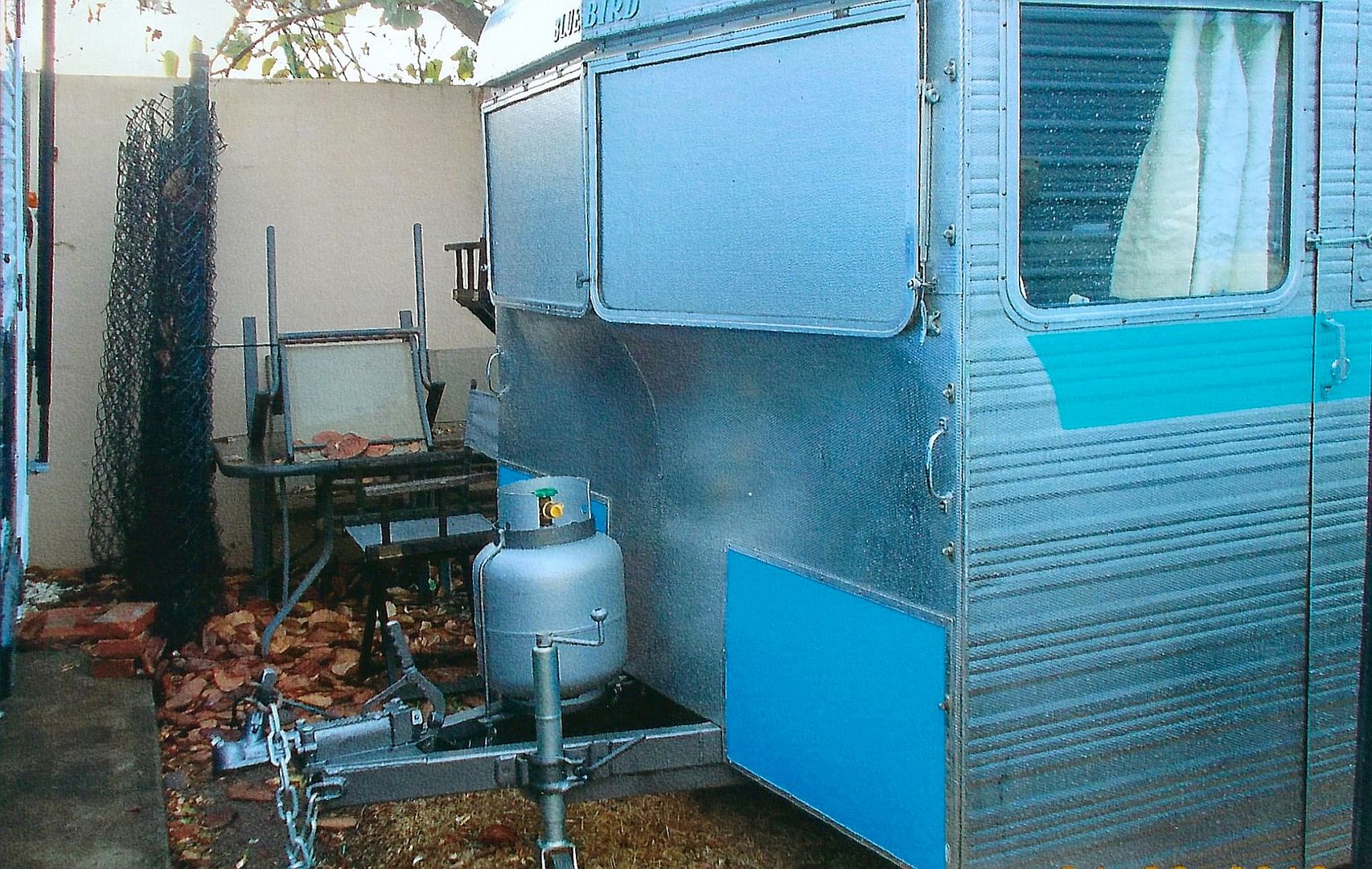
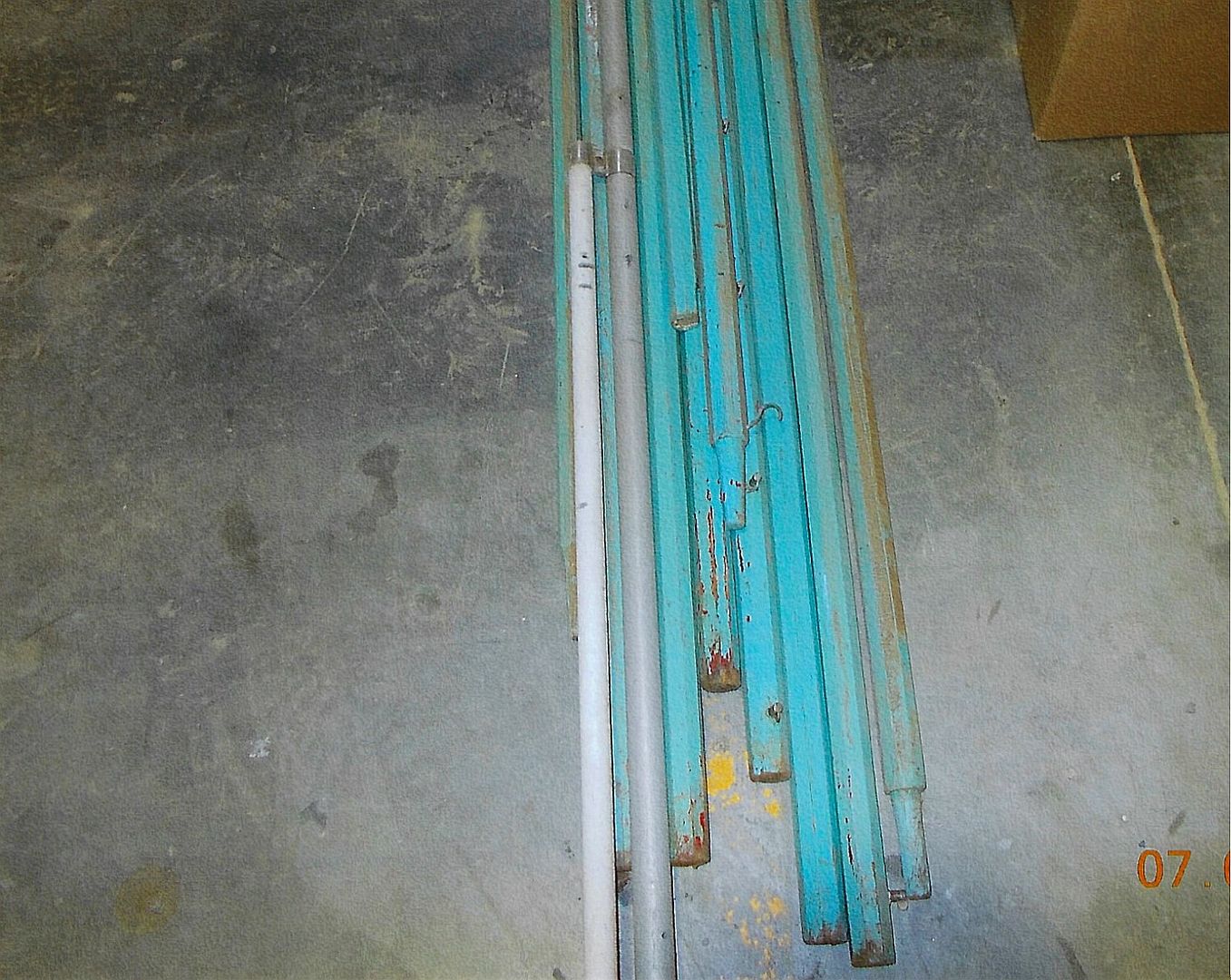
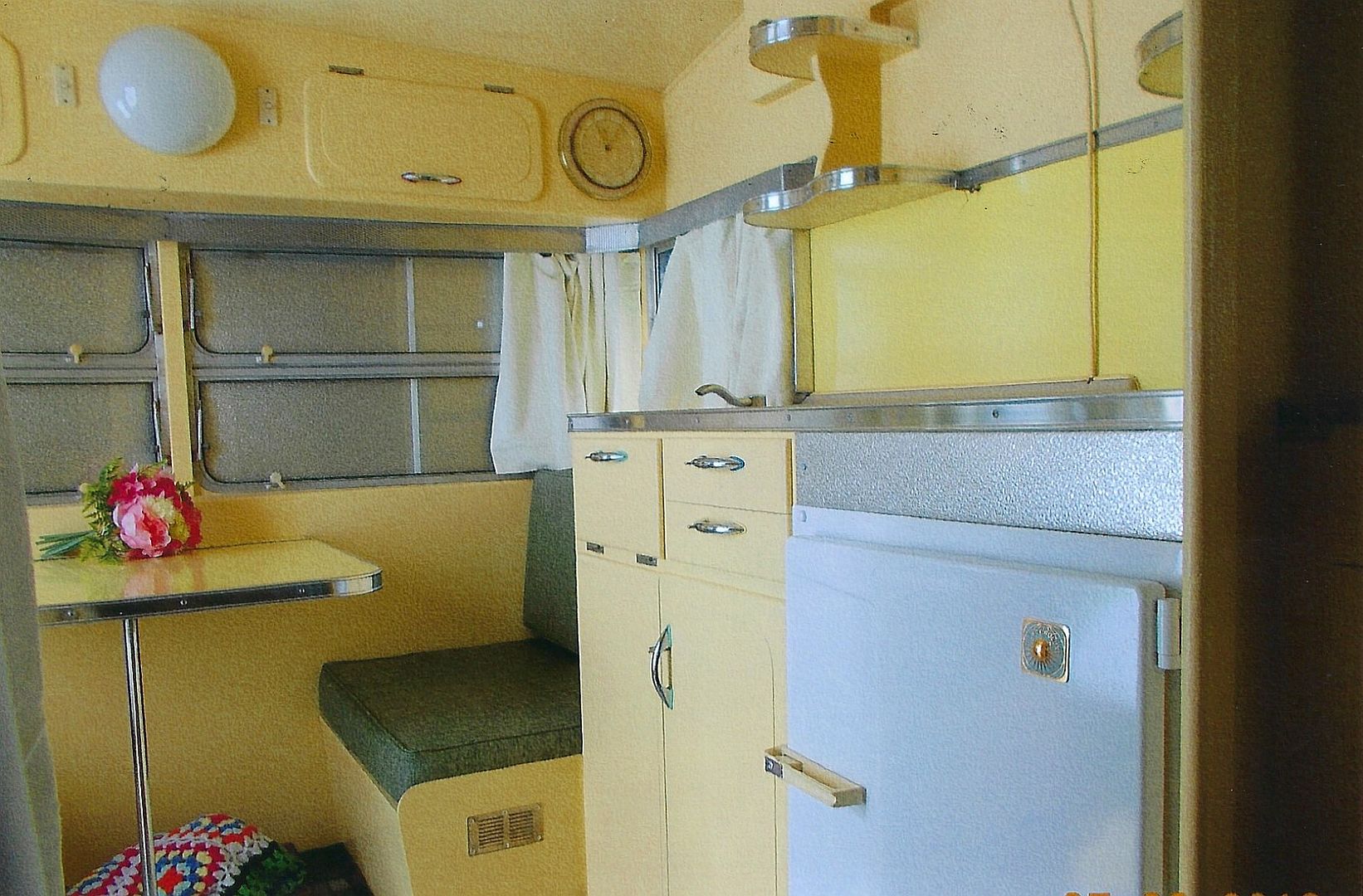
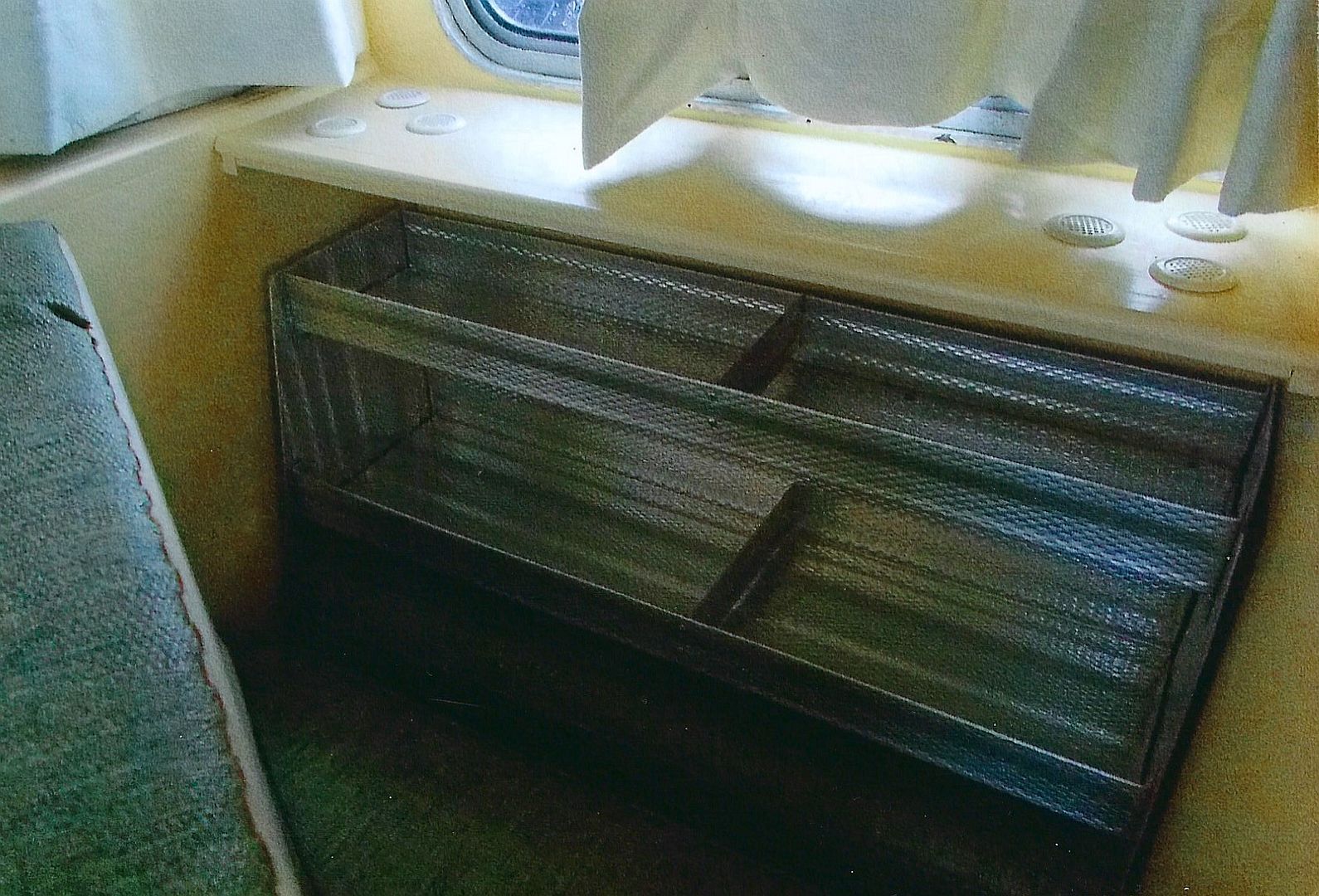
.jpg)
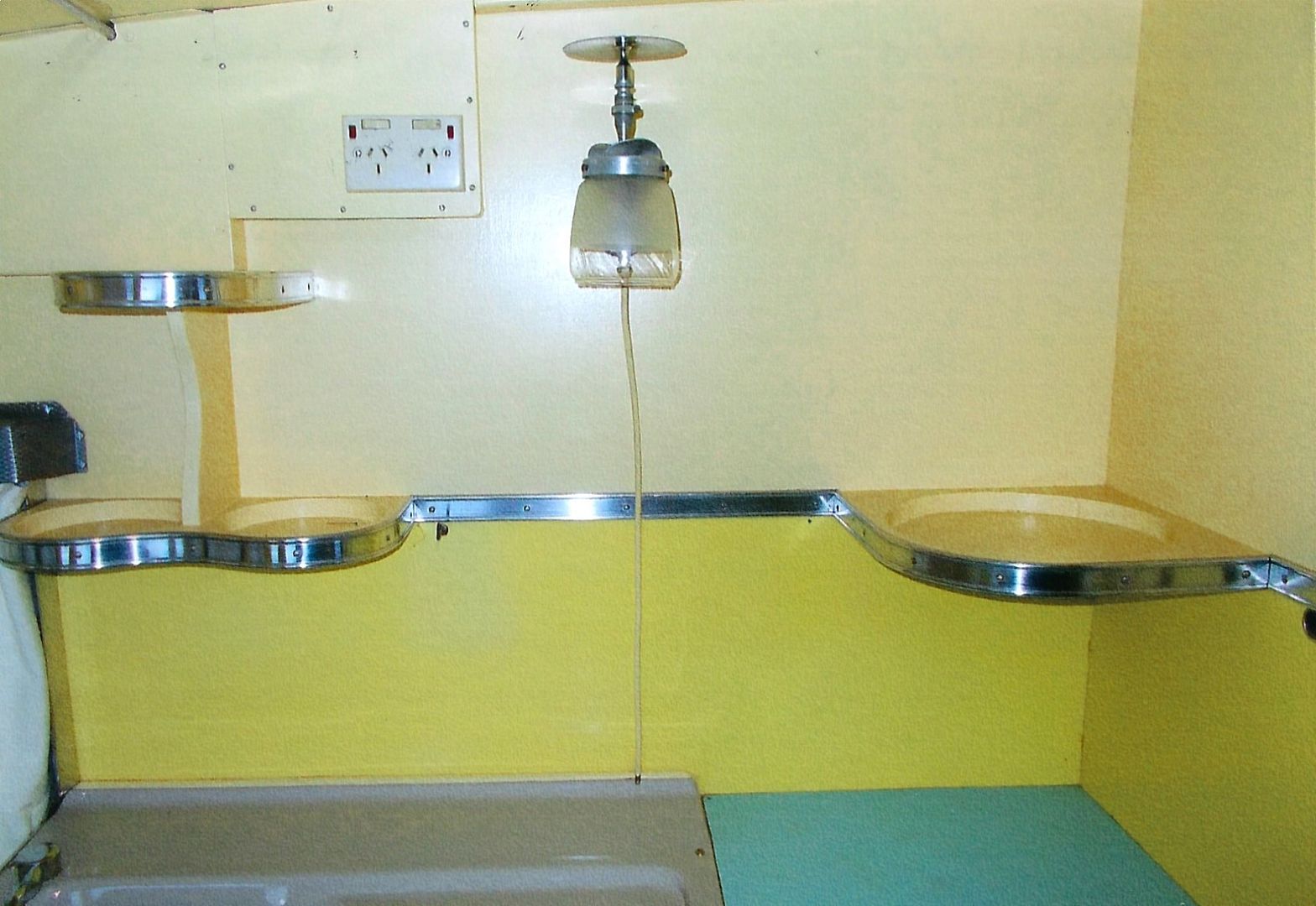
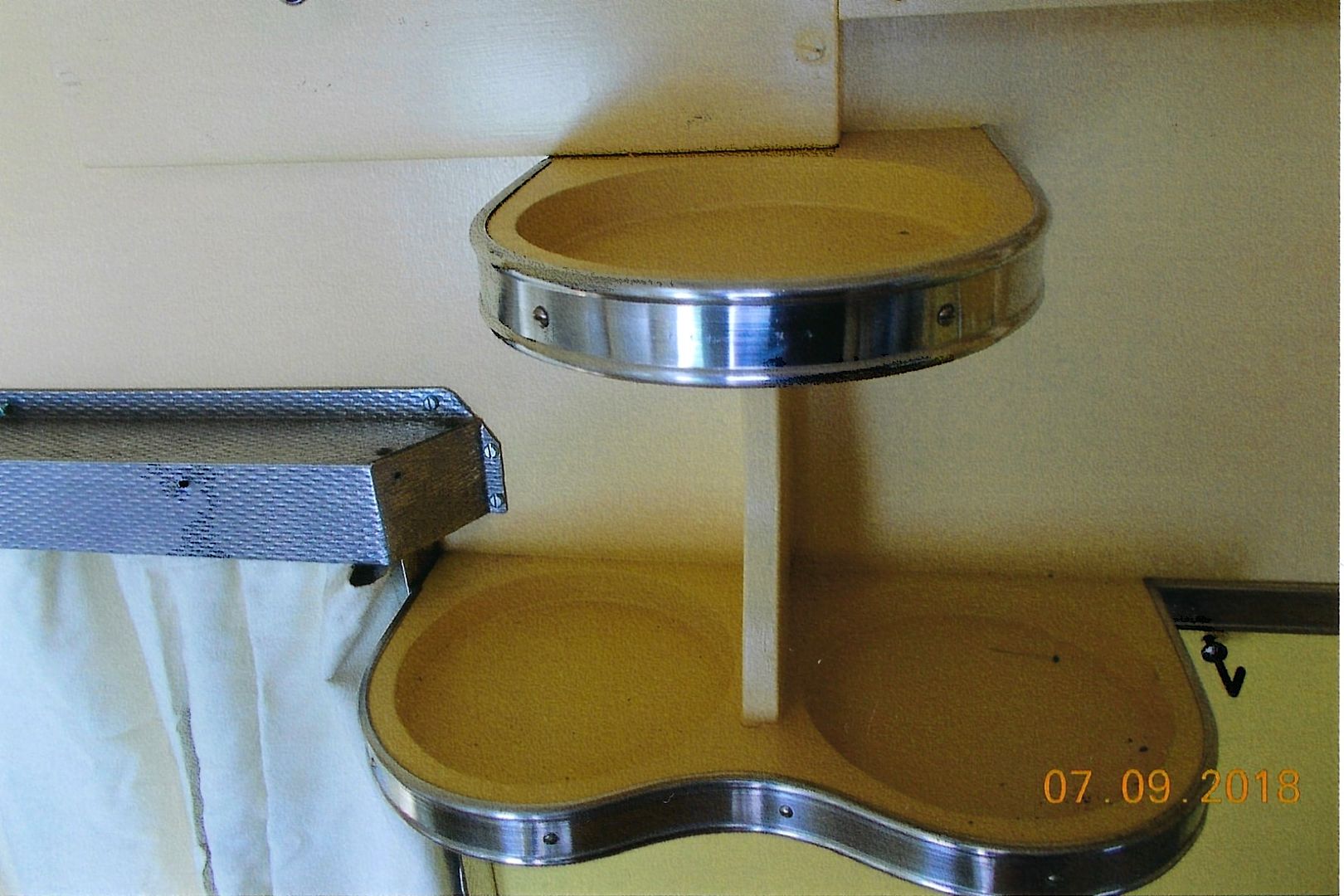
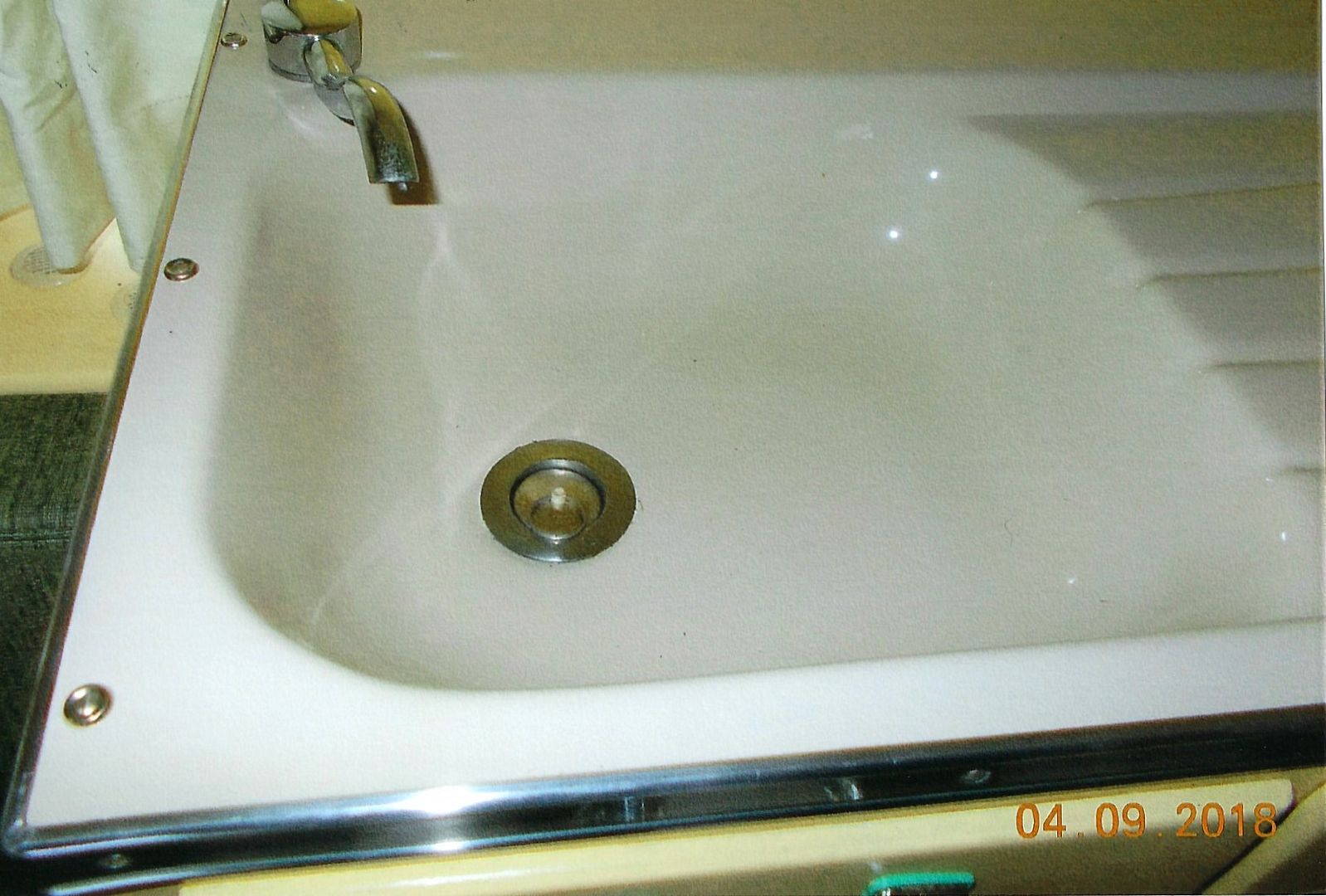
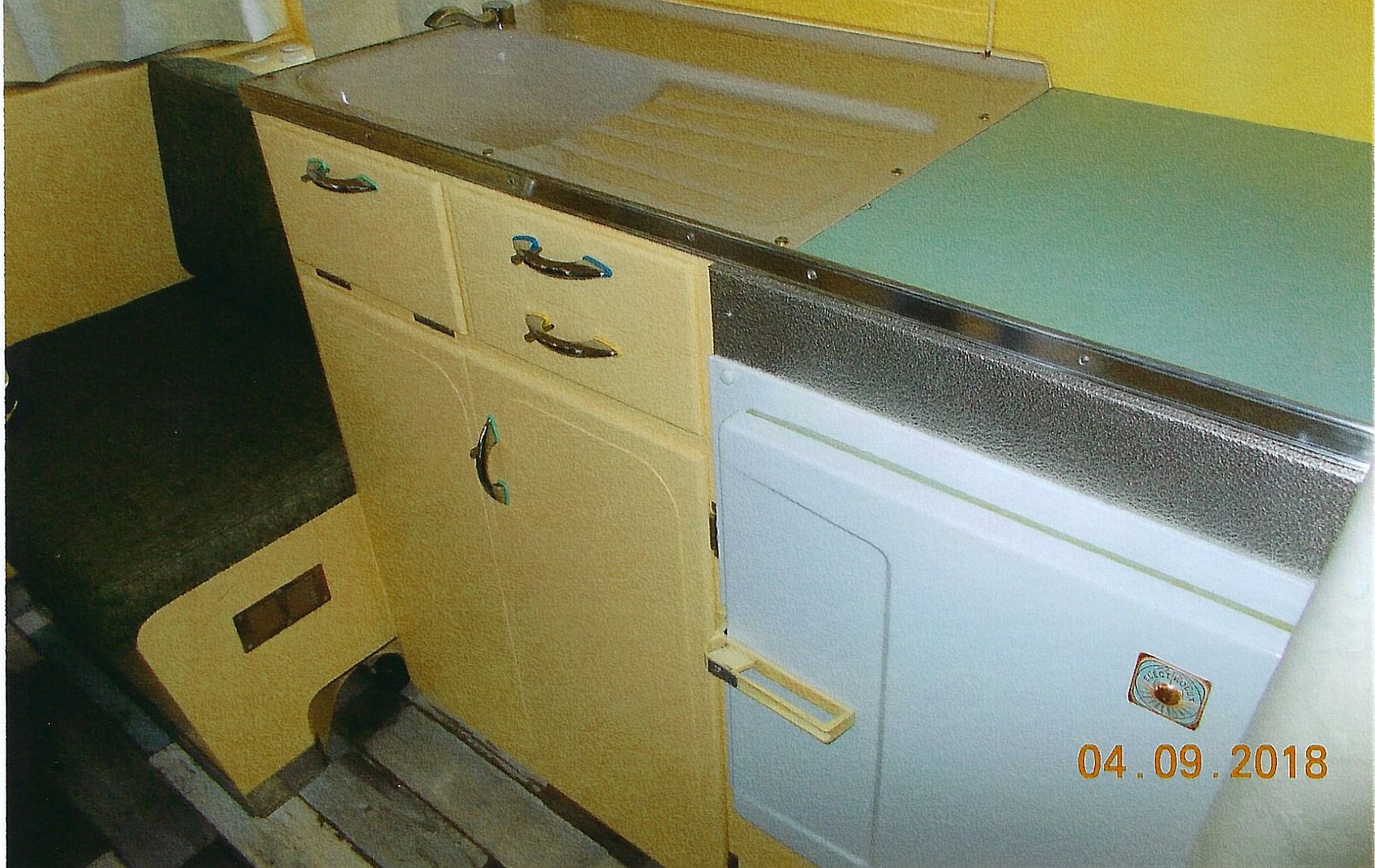
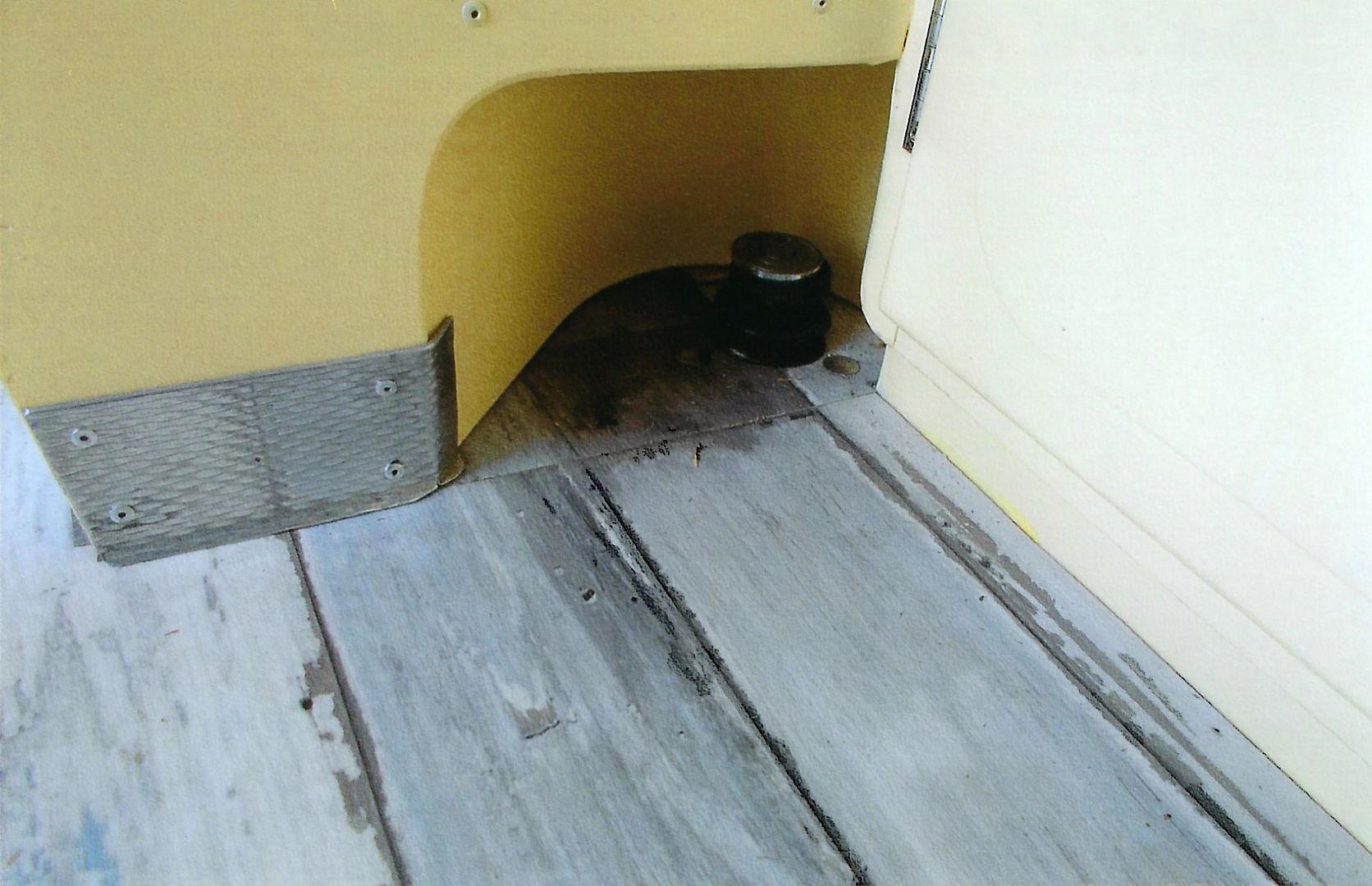
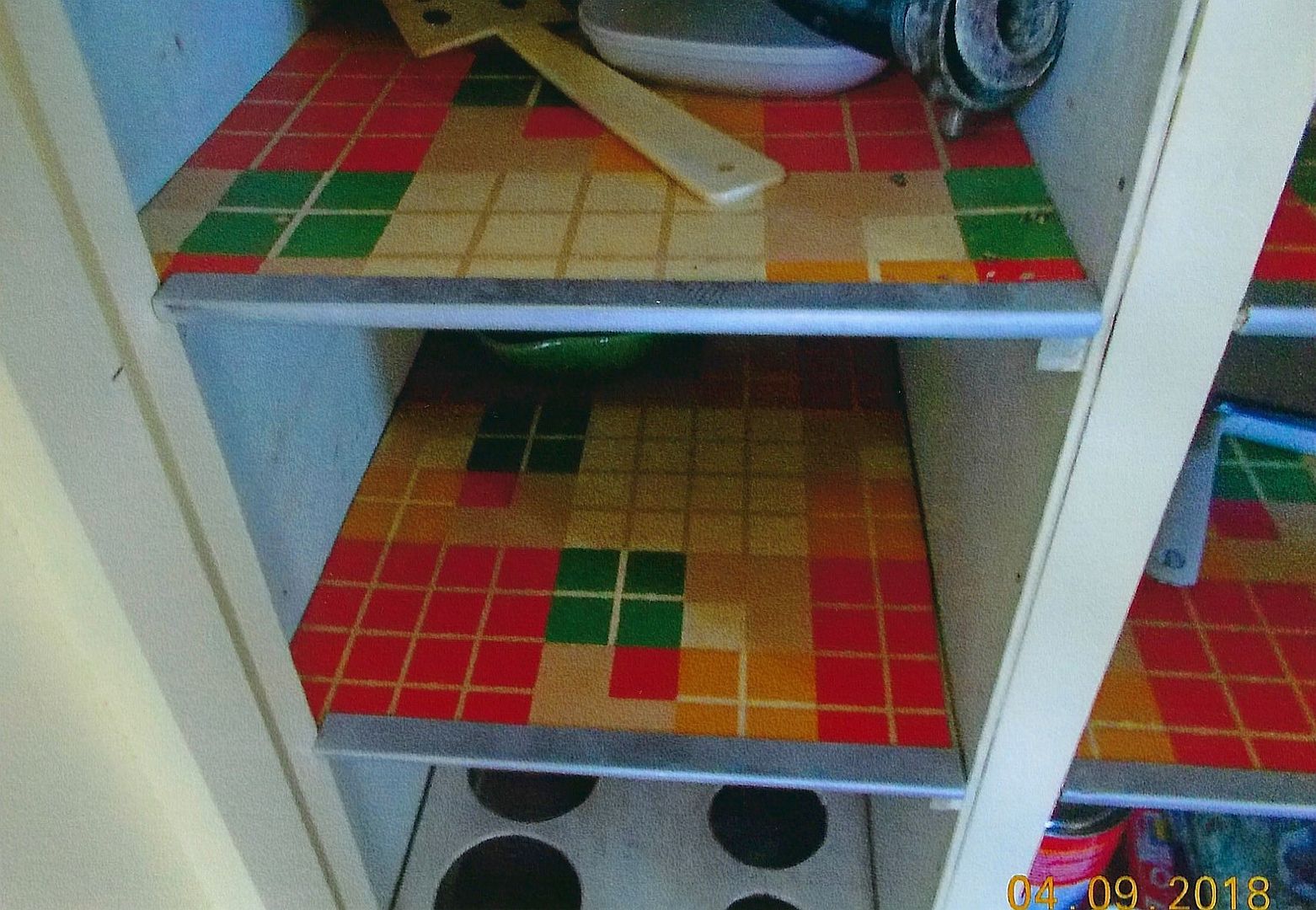
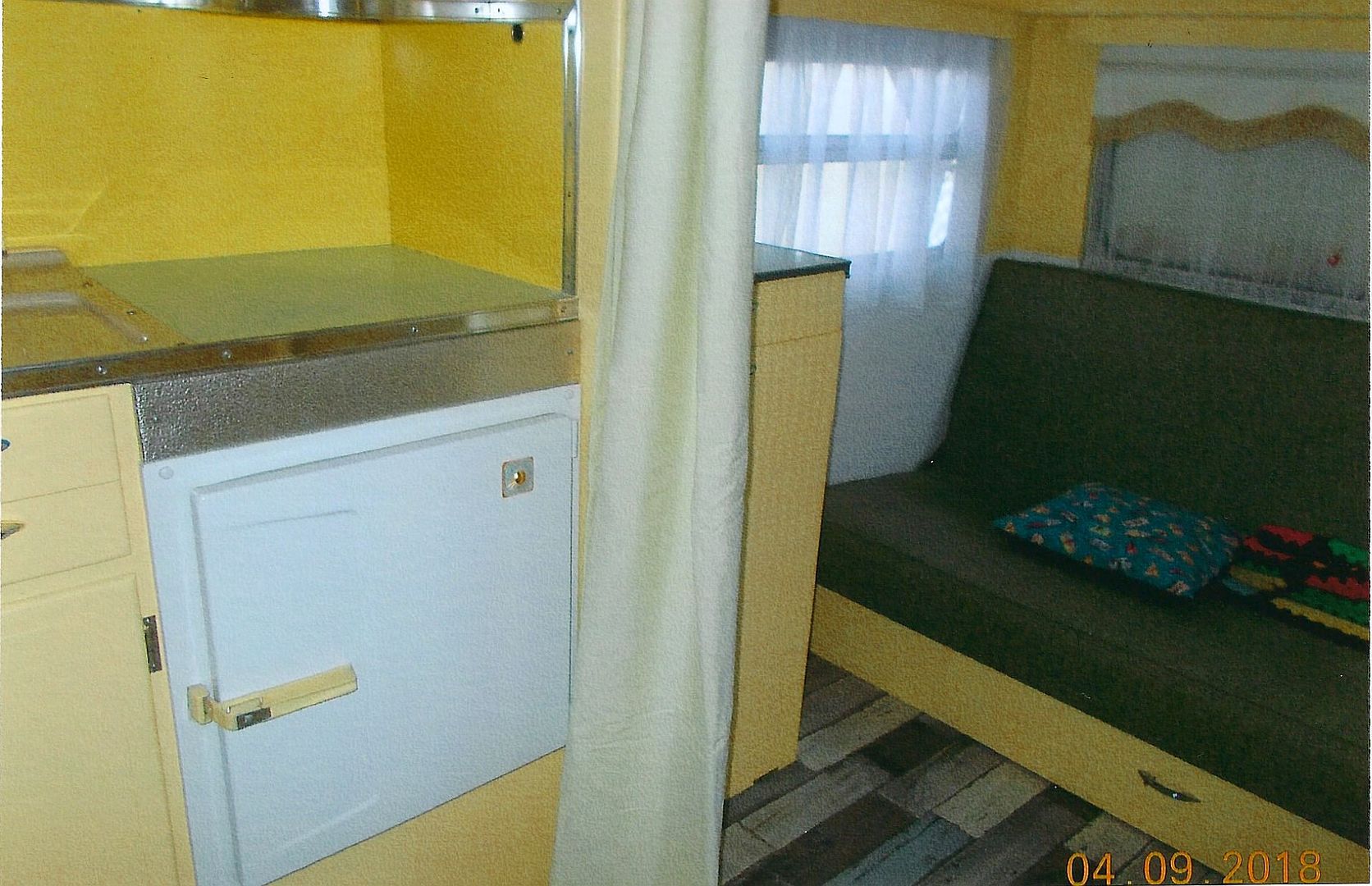
_K.jpg)
_J.jpg)


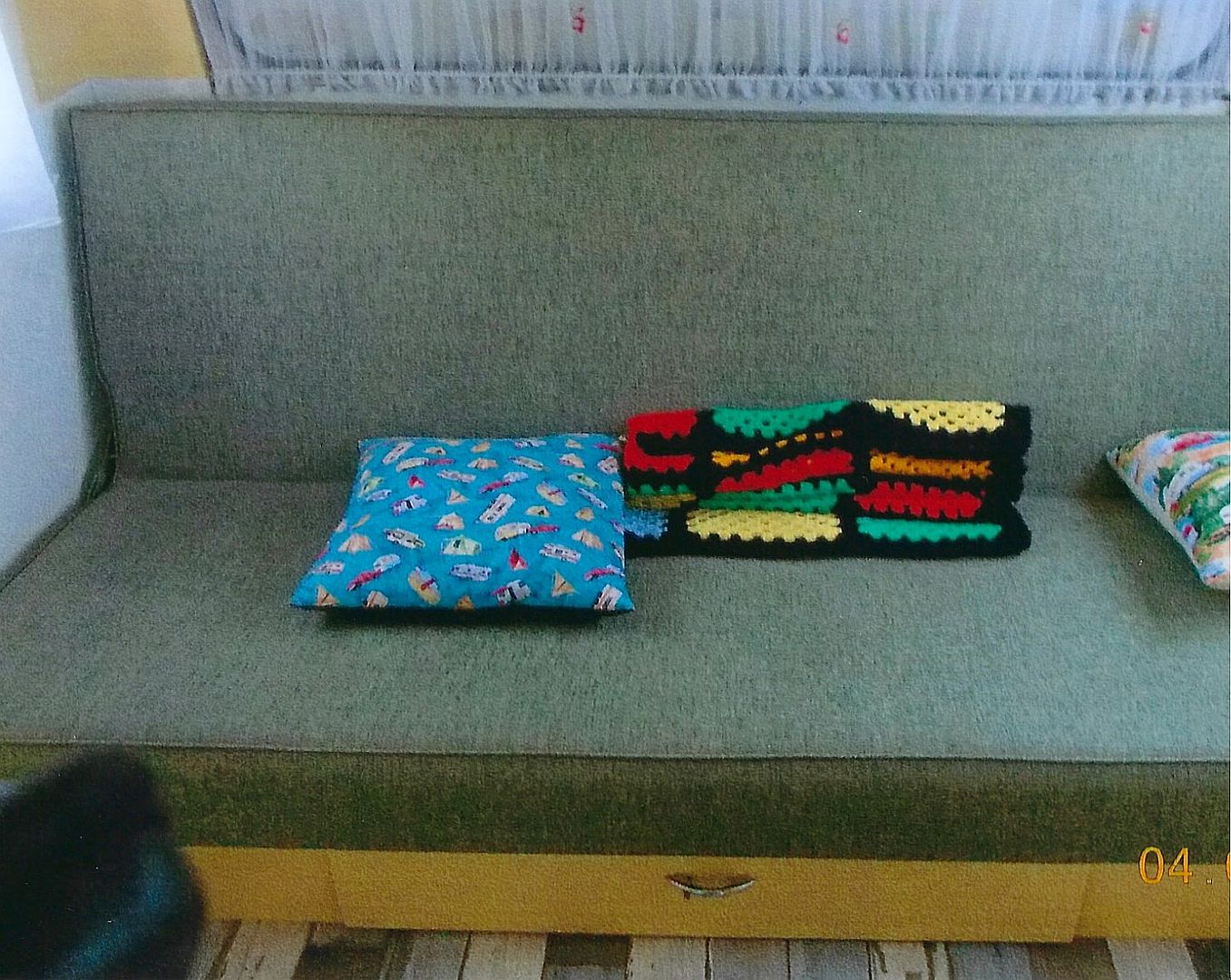

_H.jpg)
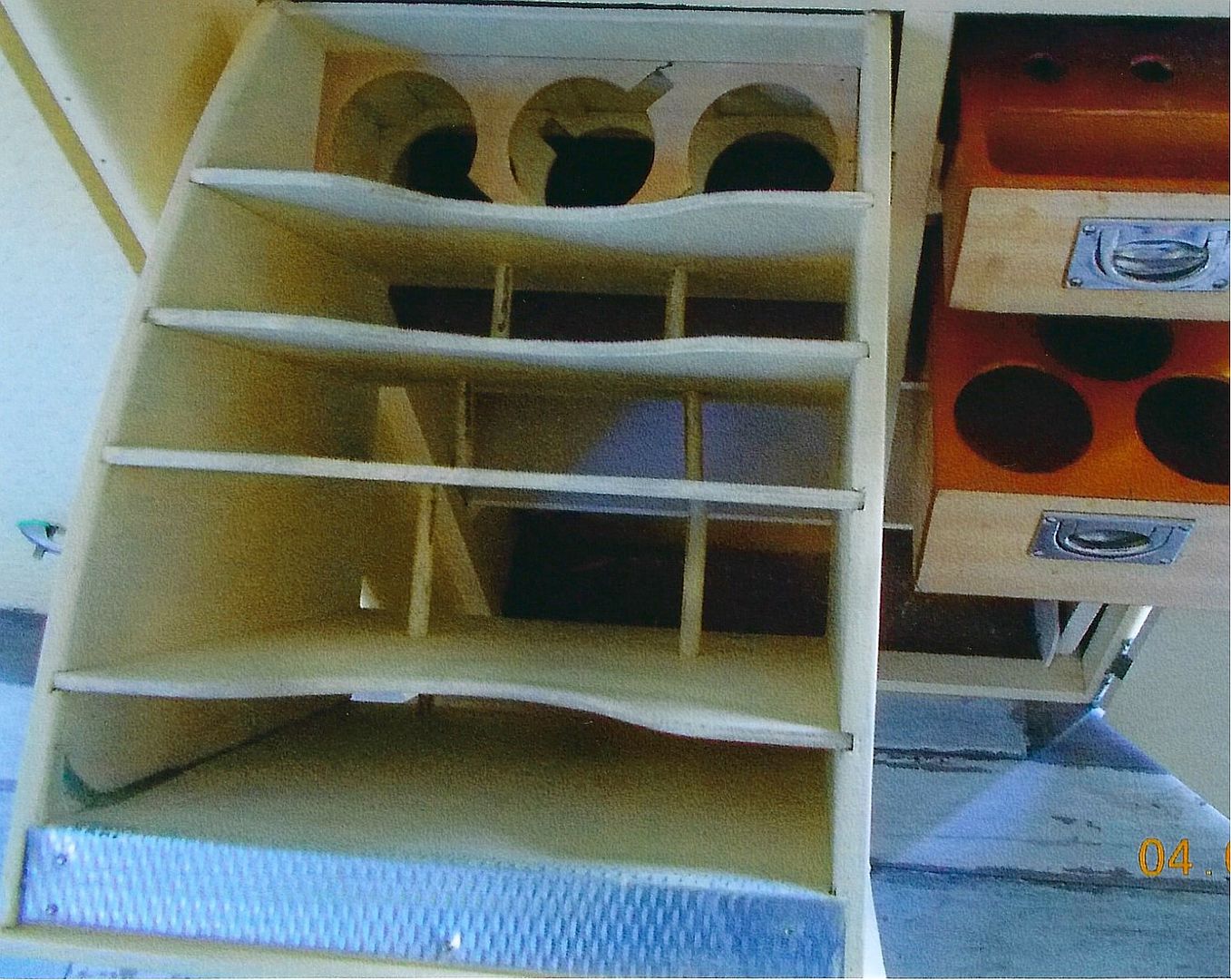
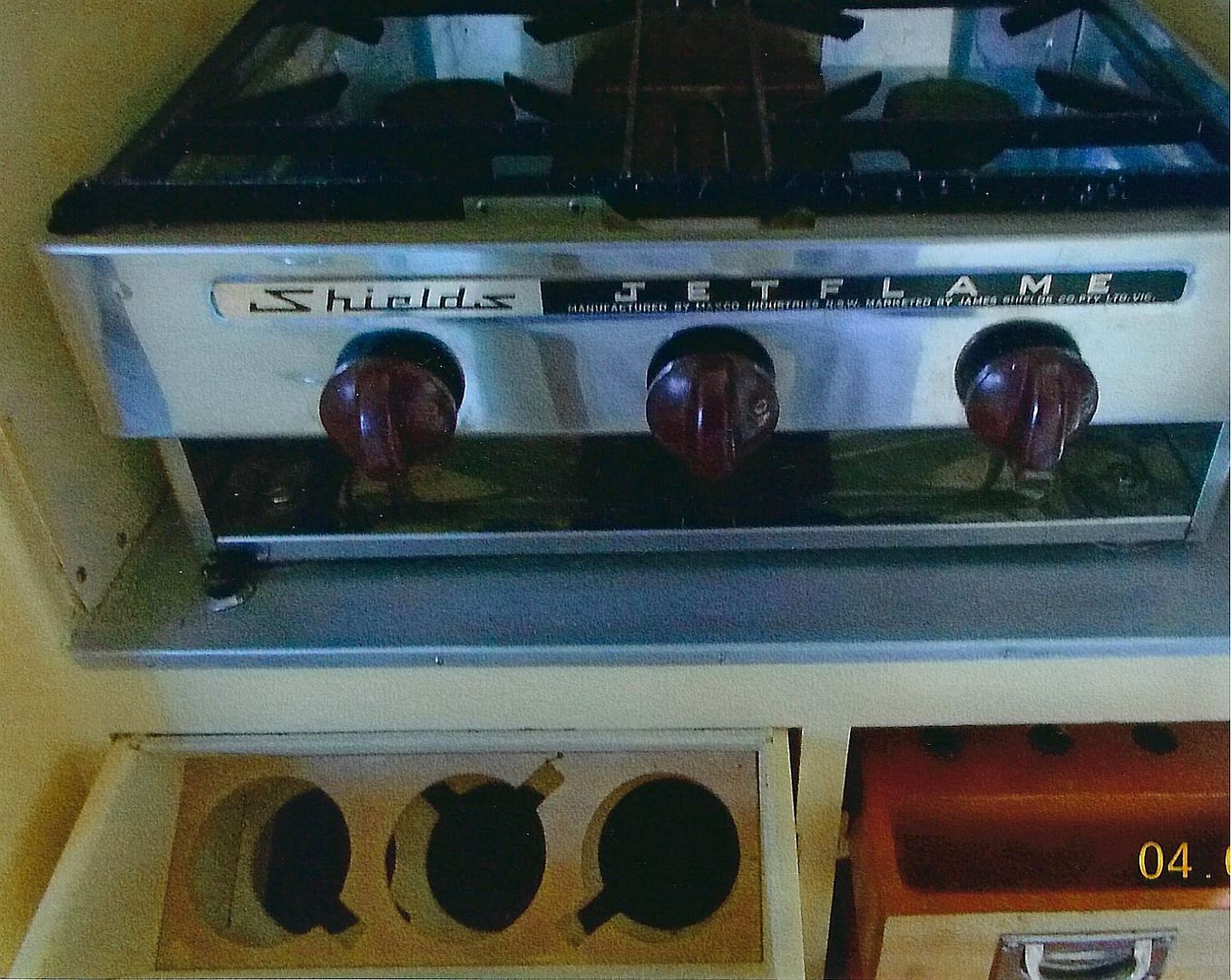
_G.jpg)
_D.jpg)
_C.jpg)